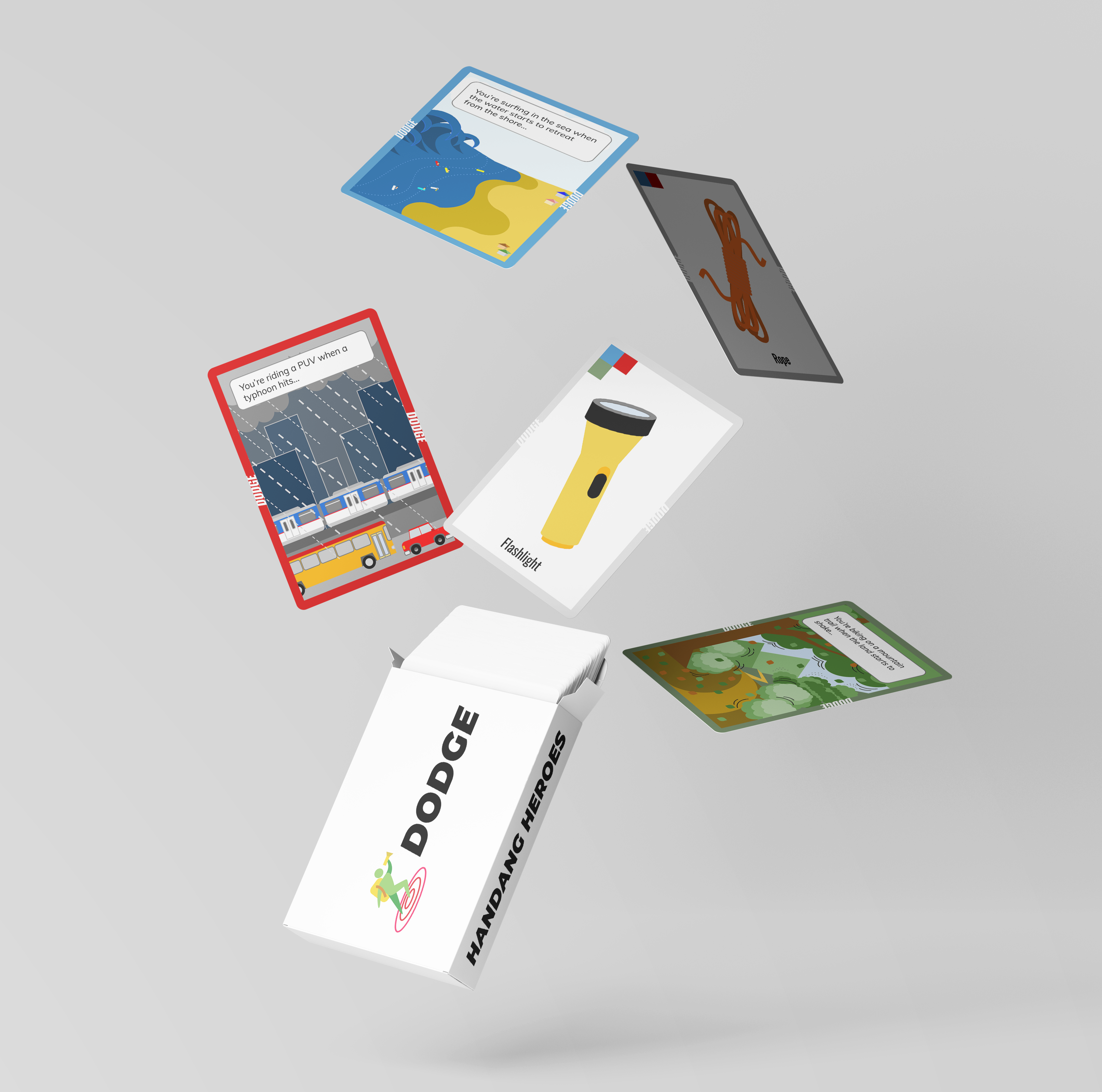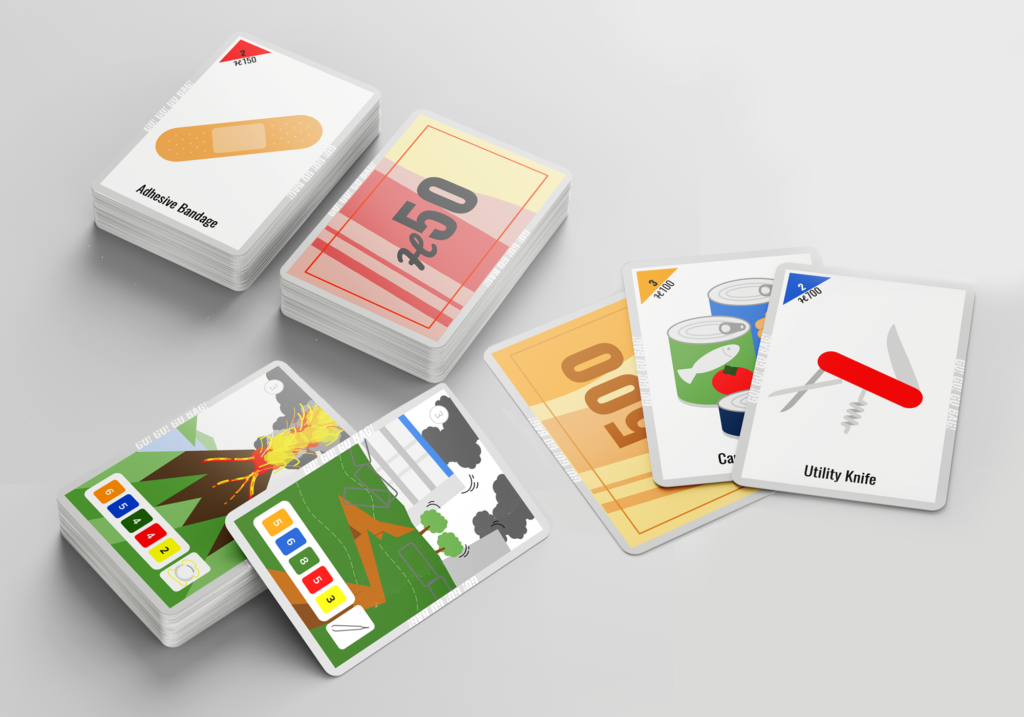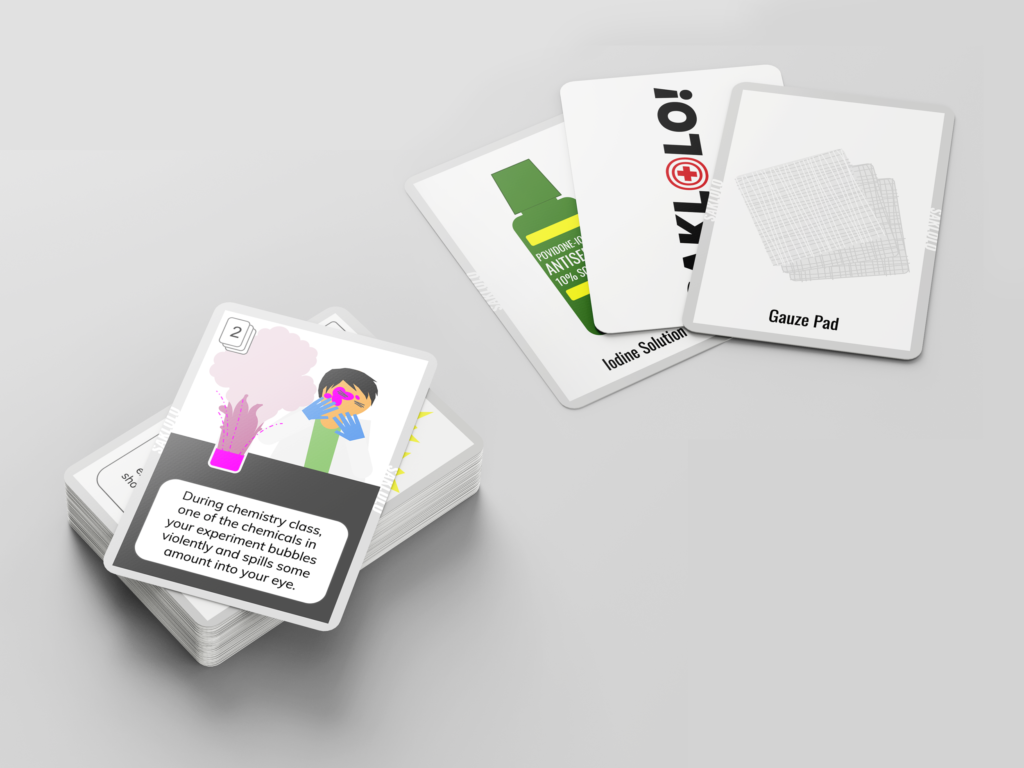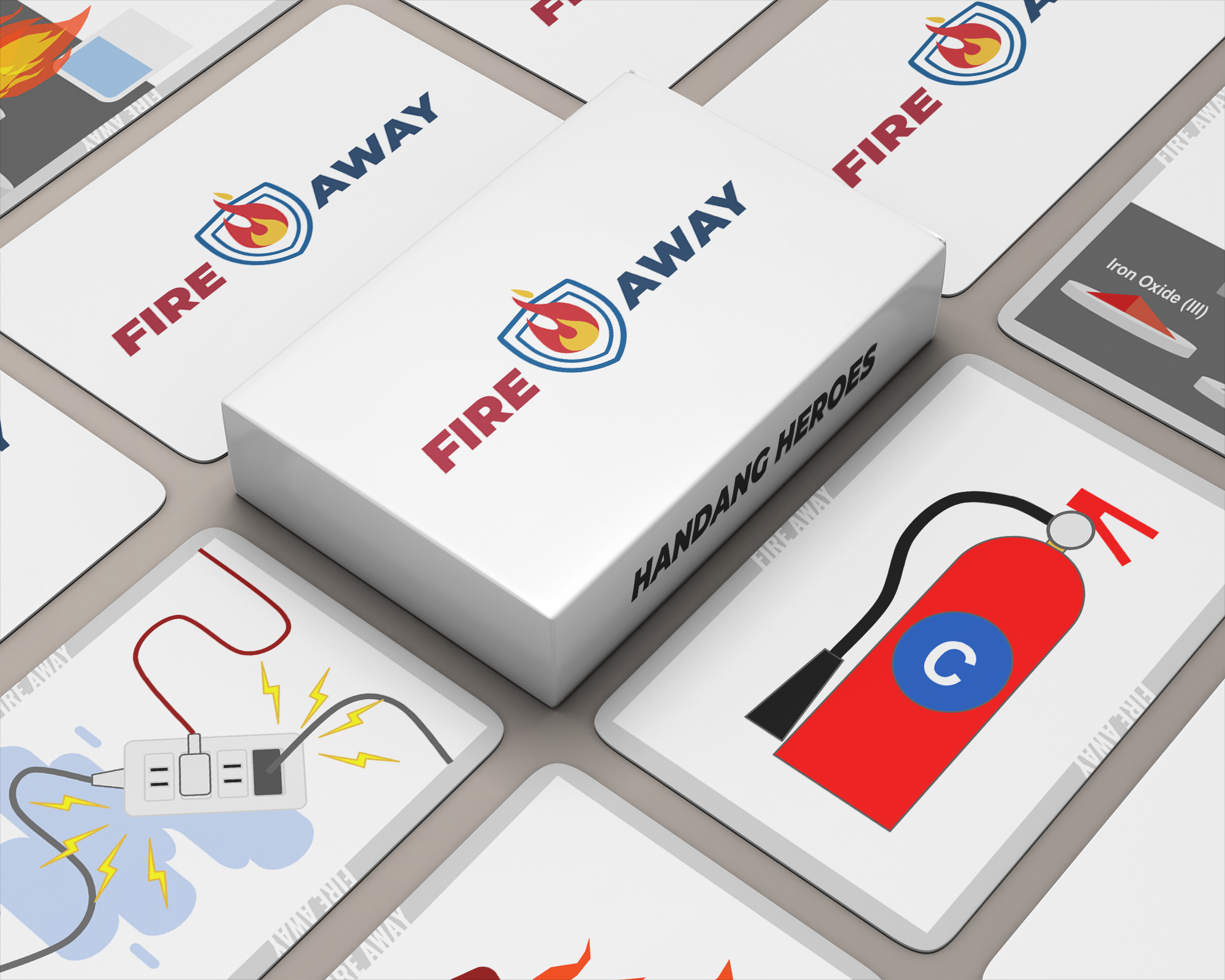Handang Heroes was developed by Habi Education Lab, through a grant given by the Japan Foundation. It was created to help senior high school learners achieve greater awareness and social involvement in DRR, CCA, and environmental protection and conservation.
Habi employed a co-design approach for the toolkit, to develop a toolkit that is contextualized, responsive to actual needs, and rooted in best practices.
The co-design process
The co-design process started with a research phase that involved desk research and interviews, to fully understand the context of how the DRR curriculum is being implemented. The current DRR curriculum from the Department of Education was studied to understand how it was designed and implemented for the K to 12 system. Other efforts and initiatives of DepEd for DRR were studied to understand current practices of implementation and enforcement of the topics and concepts being covered. Existing tool kits developed by other organizations were also studied to see the scope of existing work when it comes to supporting DRR education for the youth.
Six teachers who taught the DRR curriculum to SHS learners in different school contexts were interviewed about their experiences and the realities of teaching DRR and CCA. Insights were gathered from the documented interviews to help inform and build the context for designing the toolkit. Of these insights, the need to make the theoretical knowledge be applied in practice while working within the constraints of the school community was the most evident.
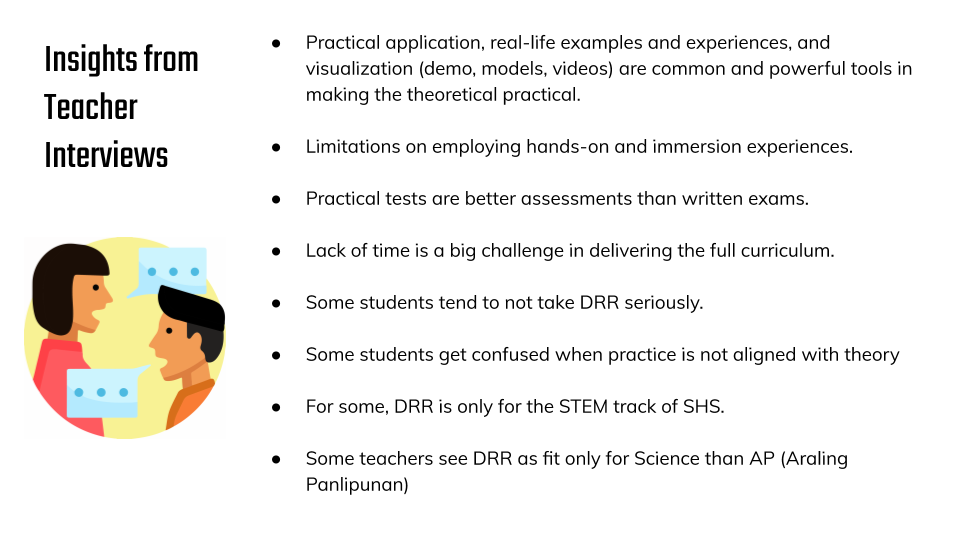
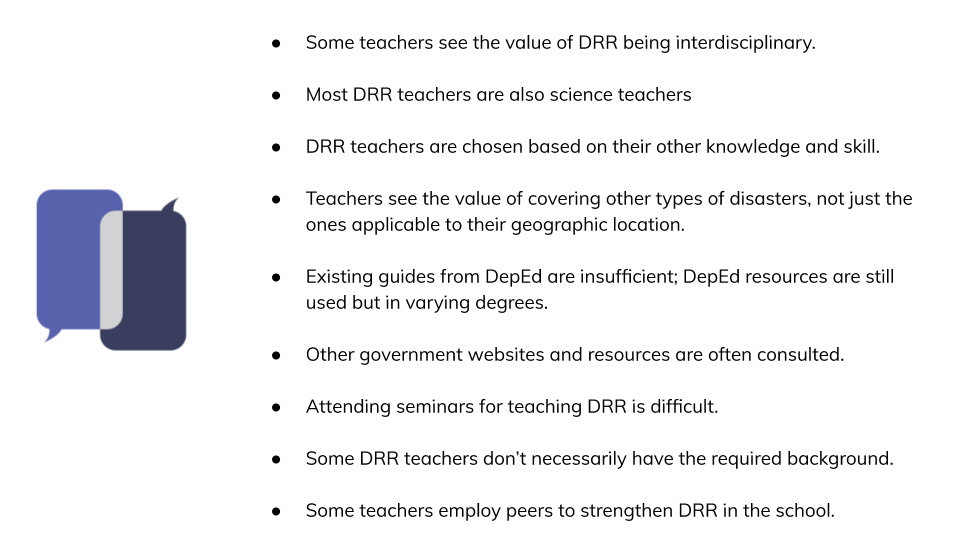
The interviewed DRR teachers were then invited to a co-design workshop with Habi Education Lab, to brainstorm possible ideas on what the toolkit might look like, how it would respond to design challenges posed from the context, and rapidly prototyping possible solutions. Four DRR educators joined the co-design workshop with the design team from Habi Education Lab facilitating the sessions. From the different ideas brainstormed, the group decided on developing a toolkit of games.
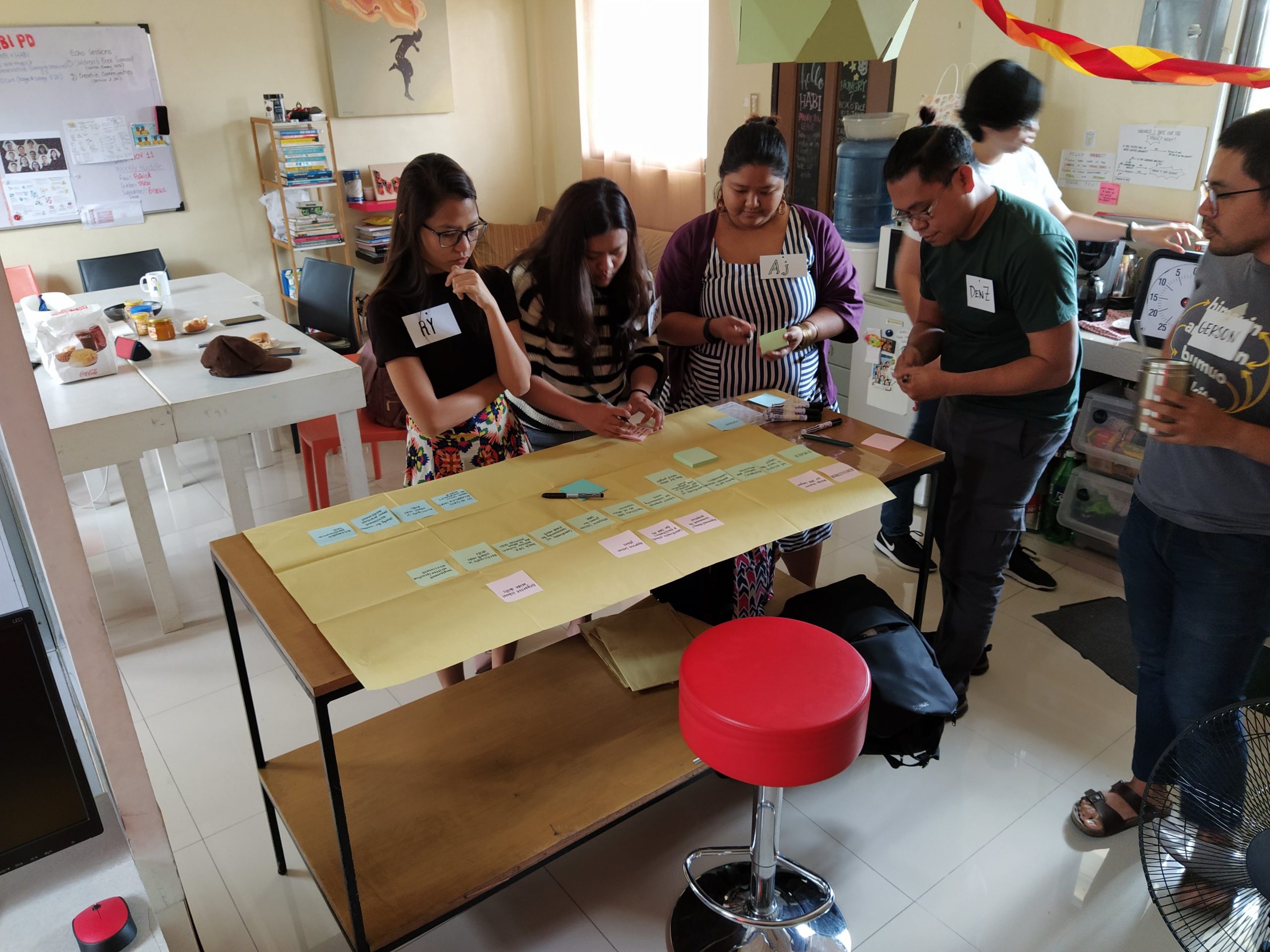
Brainstorming on “A Day in the life of a DRR teacher” 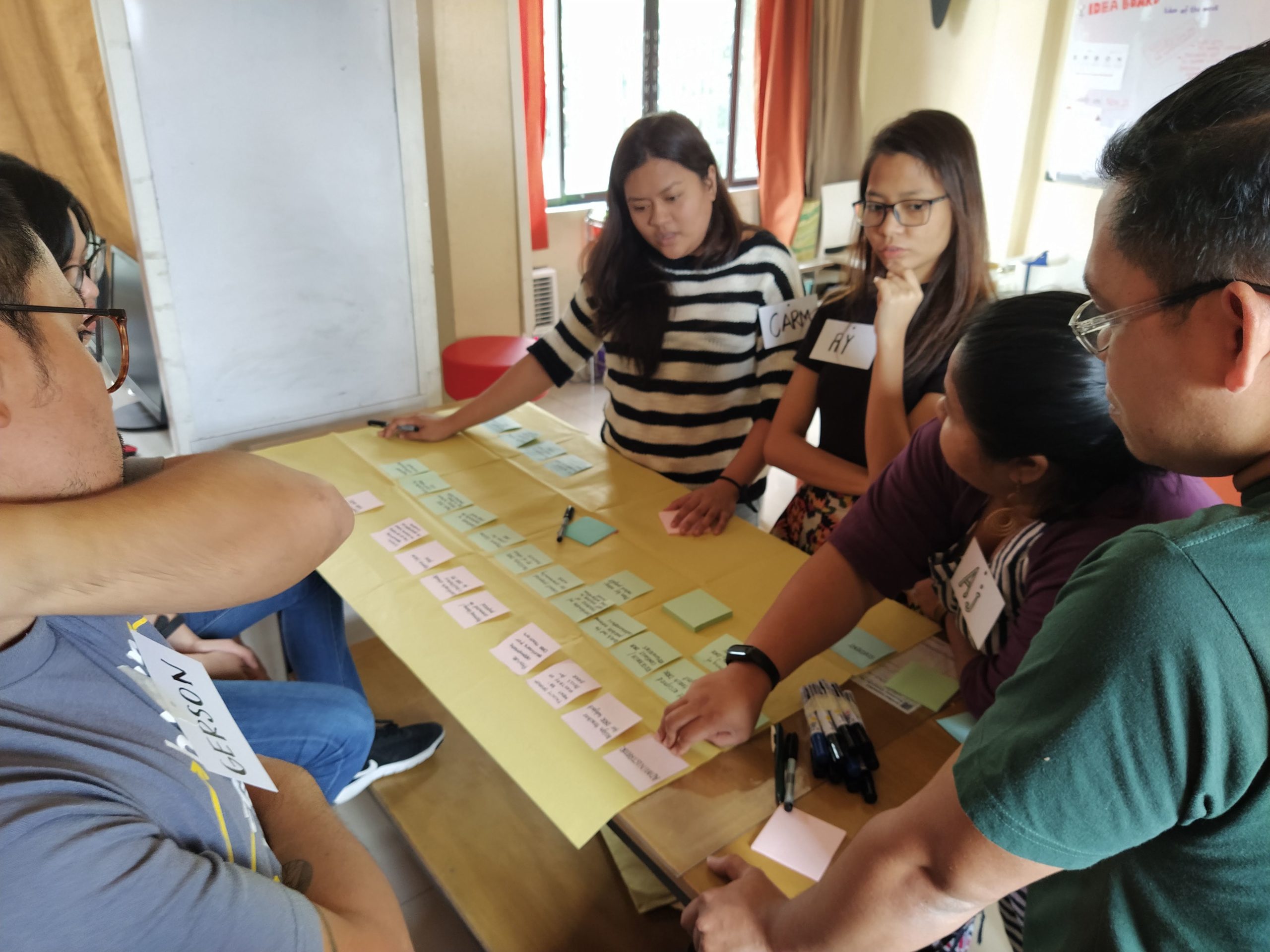
Brainstorming on “A Day in the life of a DRR teacher” 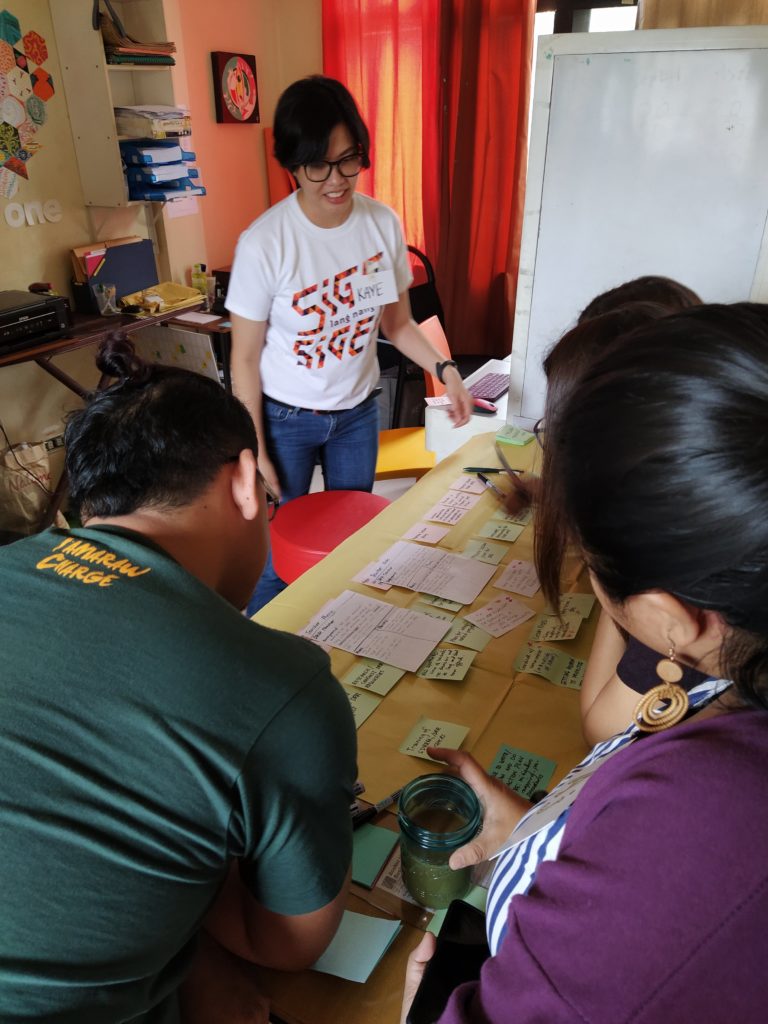
Discussing pain points, tensions, highlights and opportunities of the experience map. 
Brainstorming on ideas on how to improve the DRR learning experience. 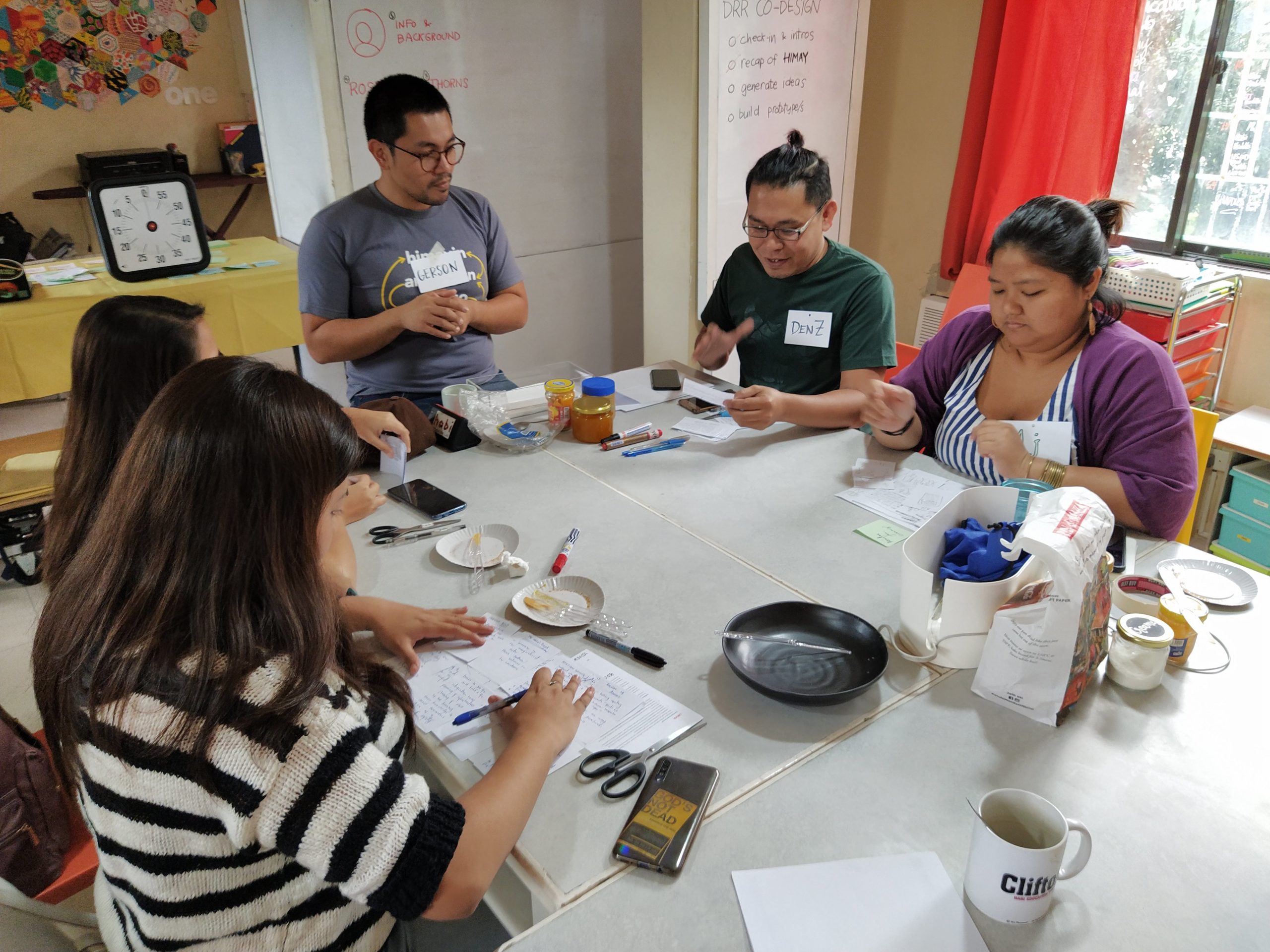
Brainstorming on ideas on how to improve the DRR learning experience. 
Brainstorming on ideas on how to improve the DRR learning experience. 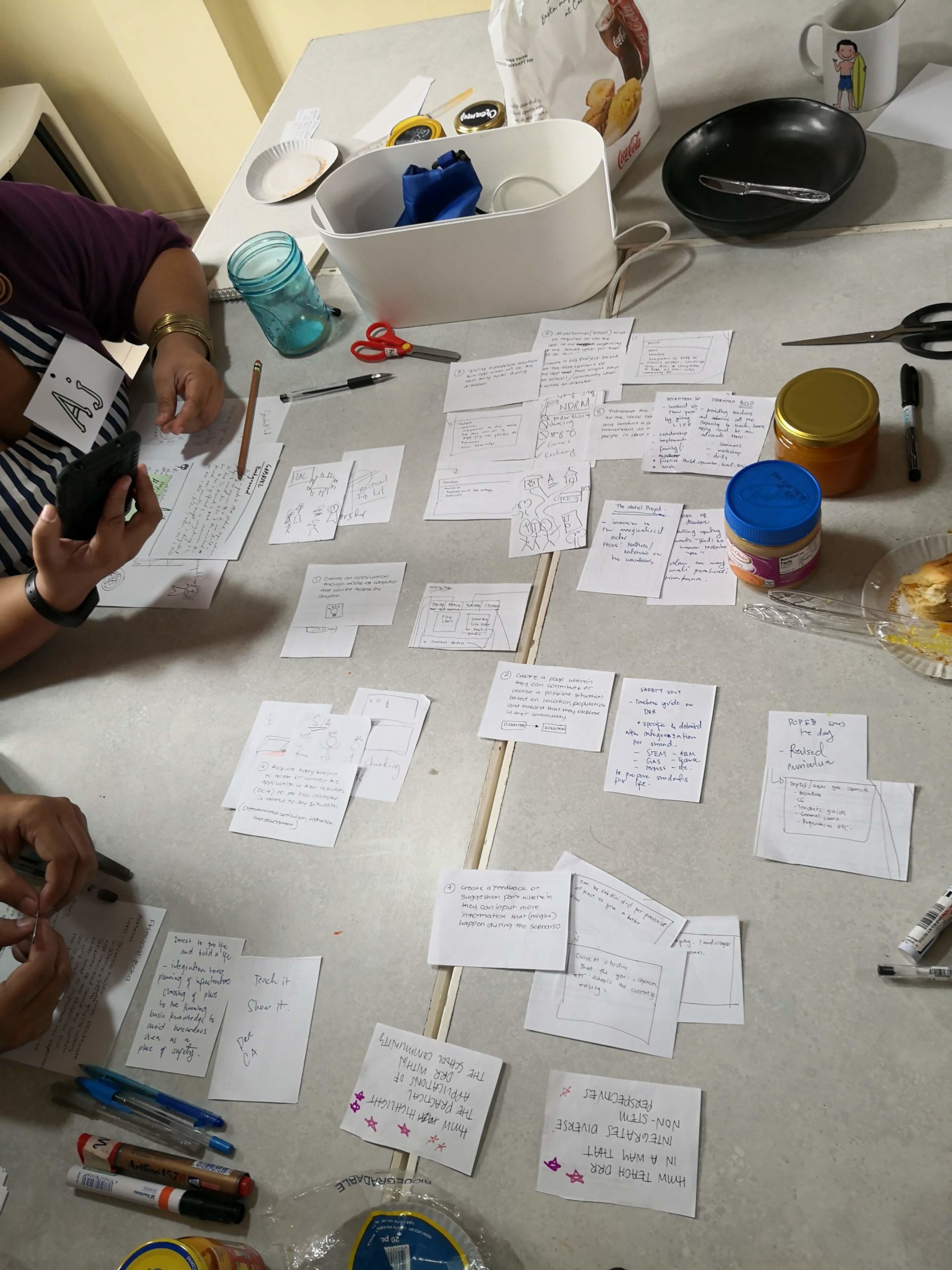
Discussing the rough ideas on possible touch points to design and/or improve. 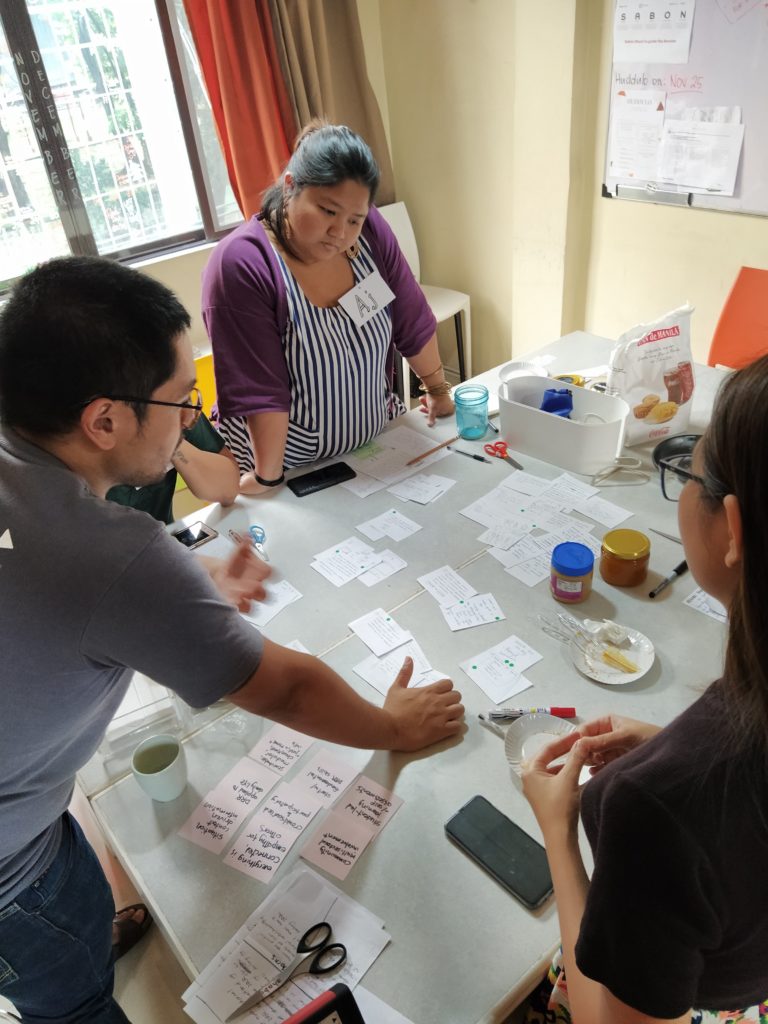
Discussing the rough ideas on possible touch points to design and/or improve. 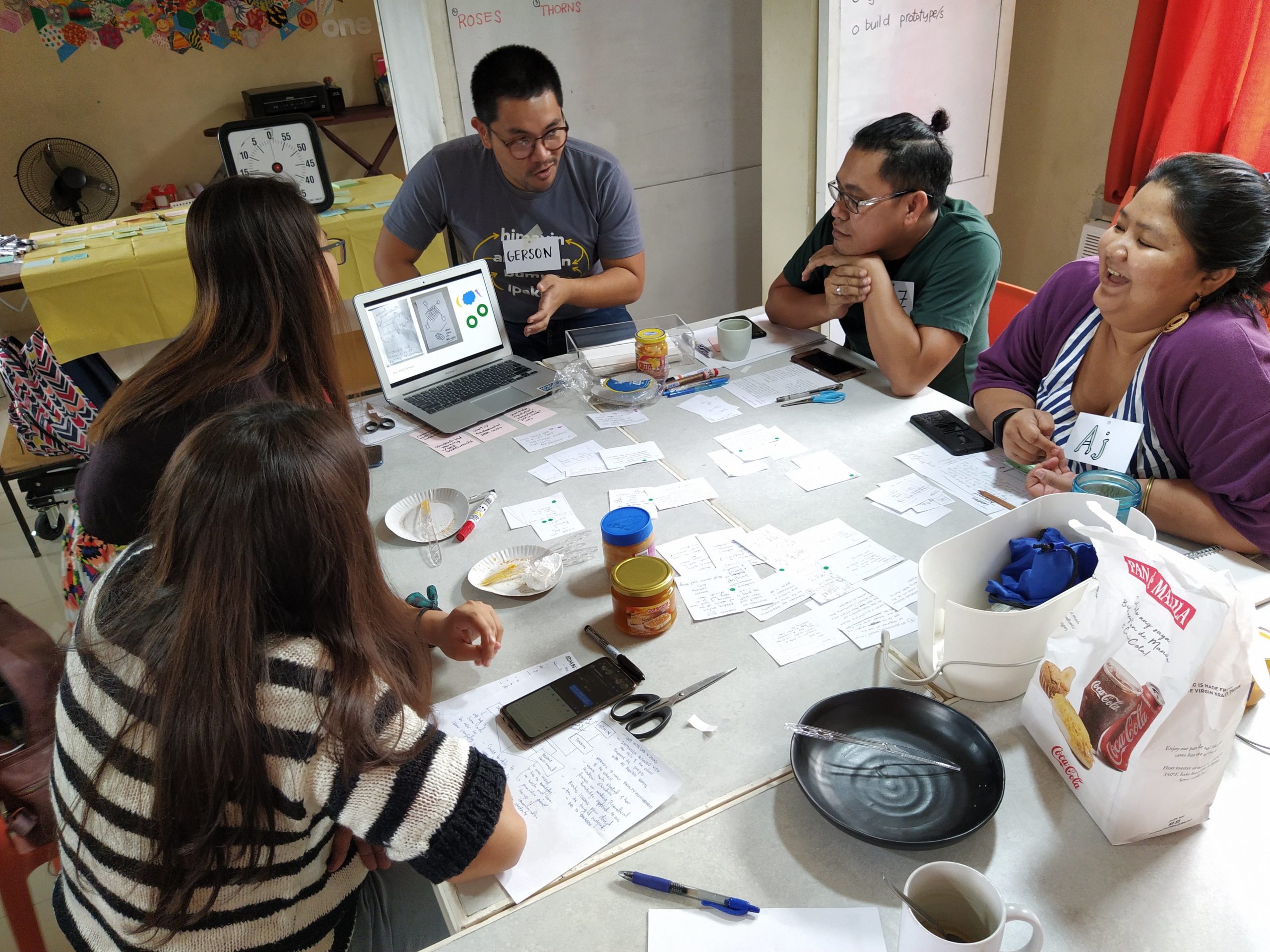
Discussing the rough ideas on possible touch points to design and/or improve.
Gamification of DRR Learning
Gamification as an educational approach is not new and games have long been used to motivate and engage learners in order to facilitate meaningful learning experiences. Based on the insights gathered from the research as well as discussions and exchanges during the co-design workshop, gamifying DRR topics and concepts seemed to be the most practical way to address both the motivation and engagement of learners as well as provide the space for learners to apply or practice skills derived from the theoretical knowledge they obtain in class.
With this in mind, the co-designers rapidly prototyped some games to see if these would be appropriate for DRR education at the SHS level in the Philippines. Two gamified learning experiences for teaching DRR concepts were conceptualized after the rapid prototyping. Upon further evaluation of the prototypes, the design team decided to pursue games which were smaller in scale and less complex, in order to make the games easier to implement in the classroom context and to also give a sharper focus on skills or concepts that would benefit from gamification or using games to substitute for practicing with real but expensive tools or situations.

A quick ice breaker to warm up before designing and prototyping games themselves. 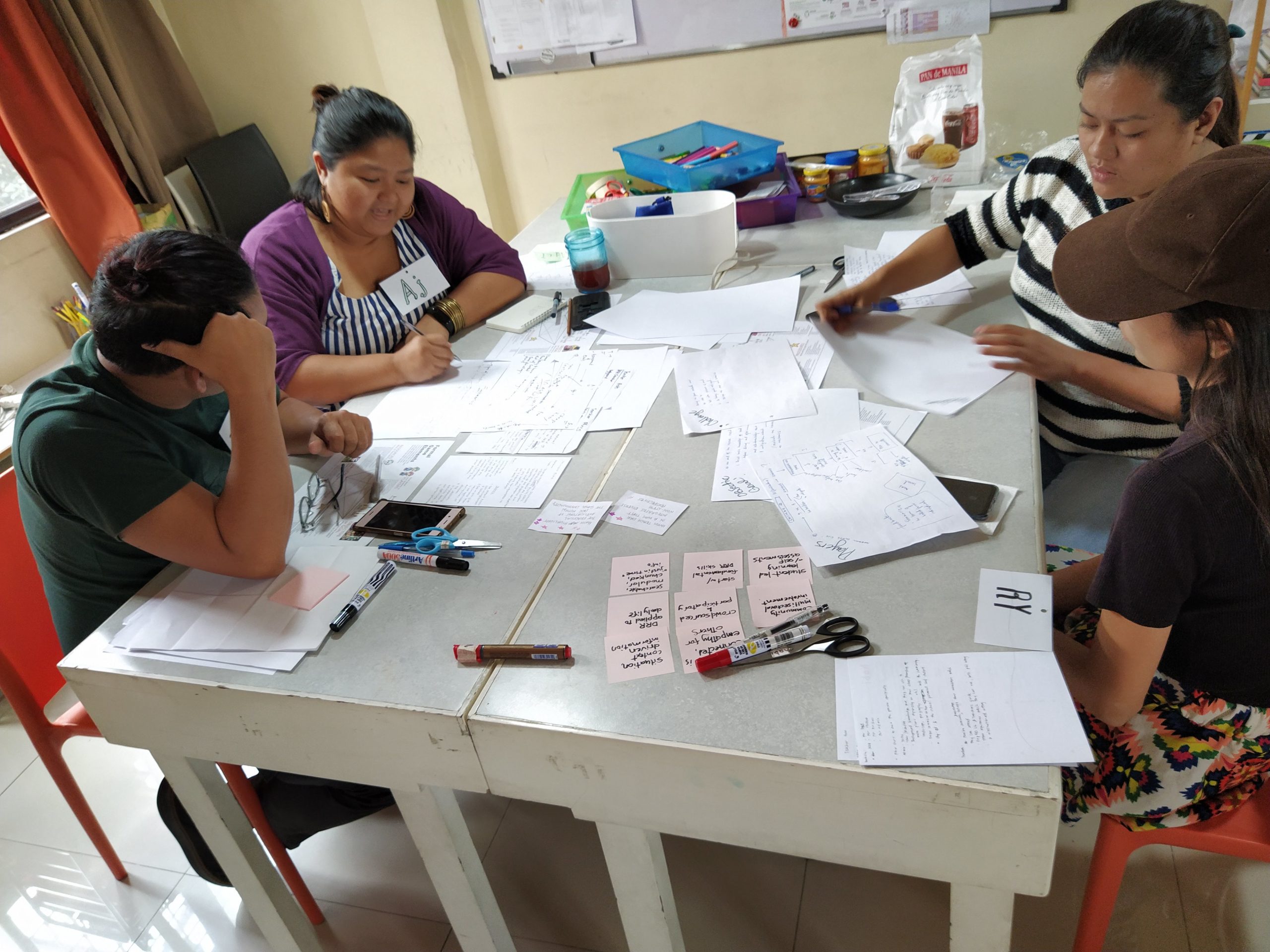
Brainstorming and quickly generating a prototype game design document. 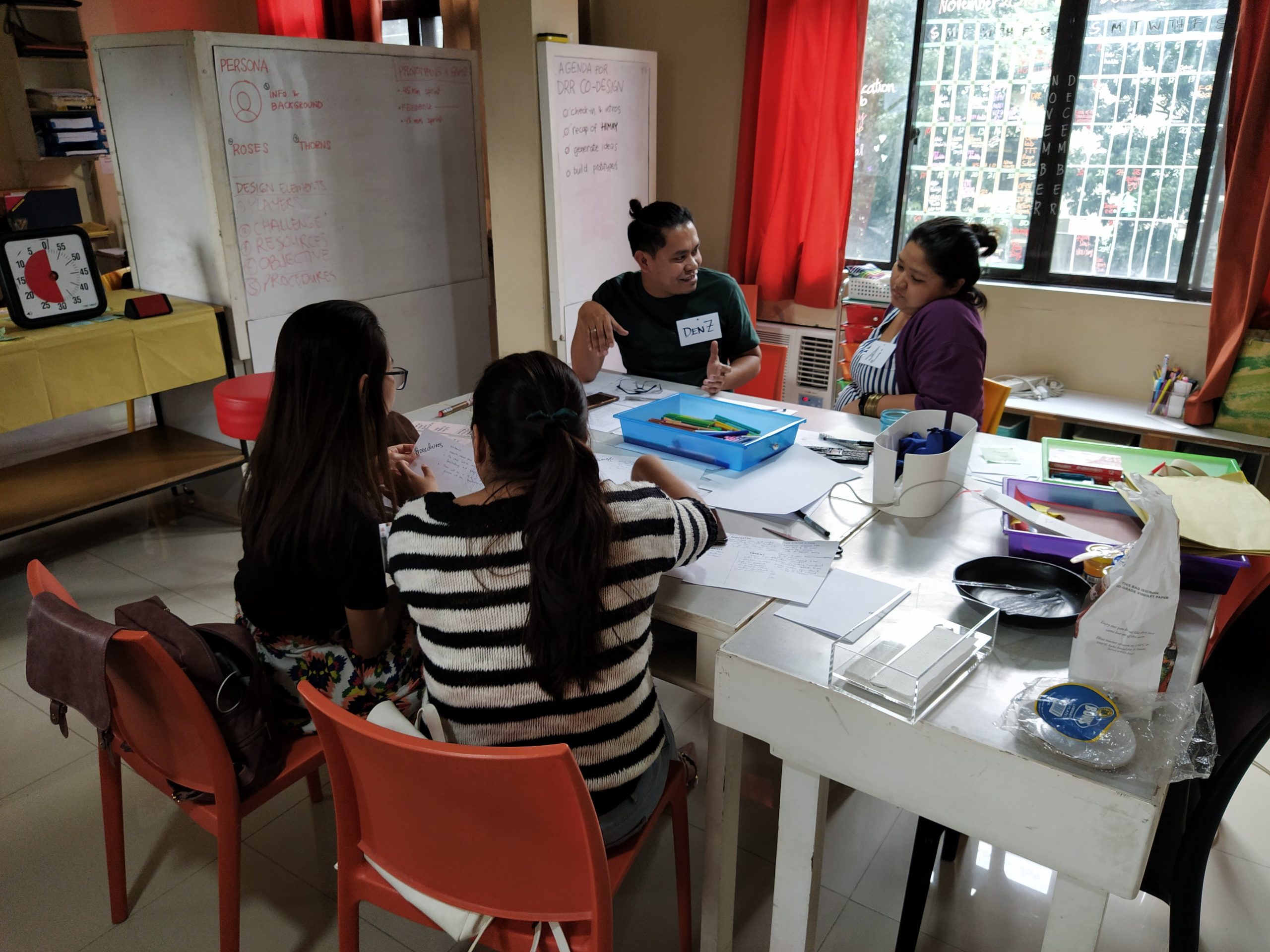
Brainstorming and quickly generating a prototype game design document. 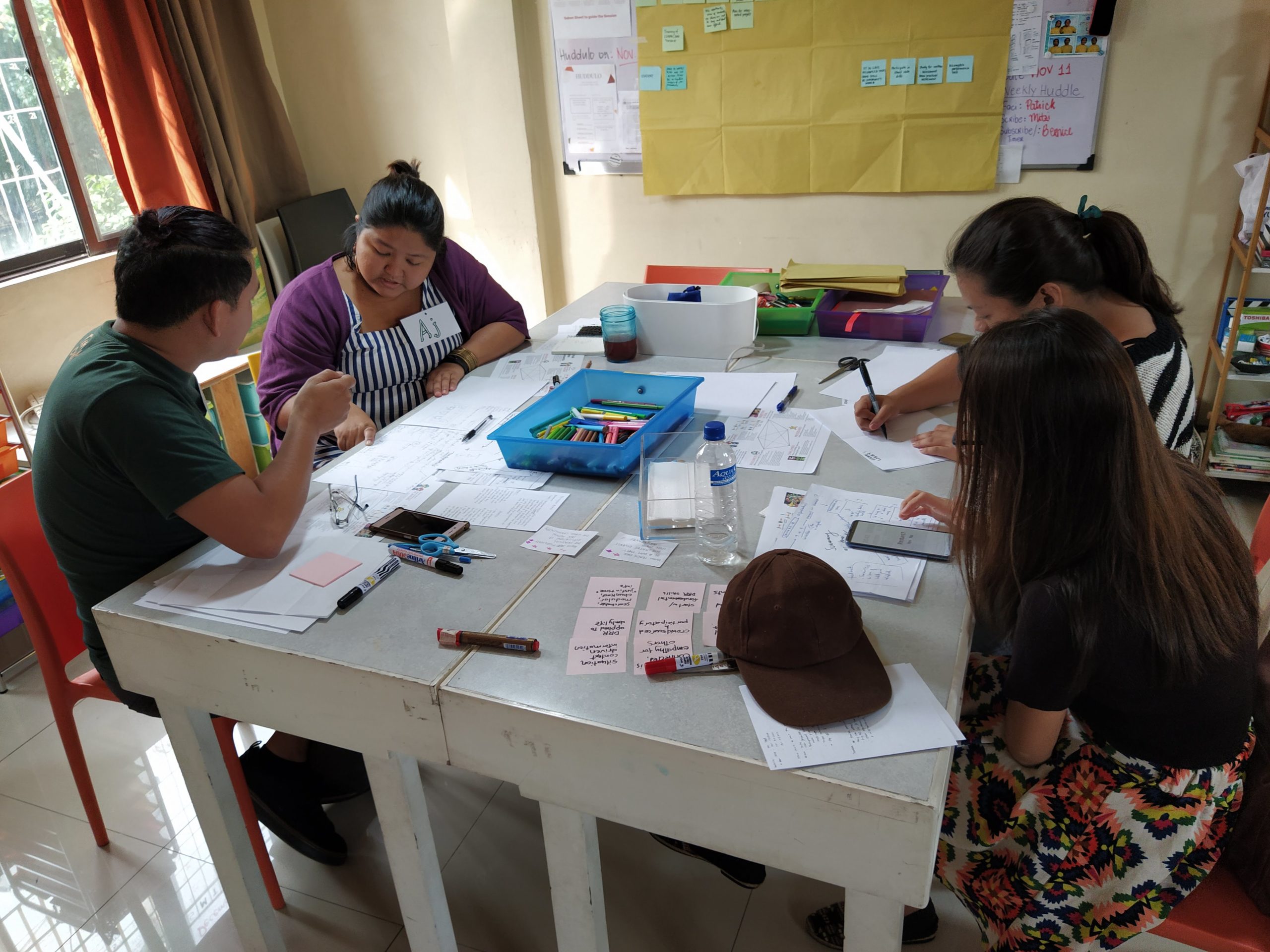
Developing rough prototypes of their games. 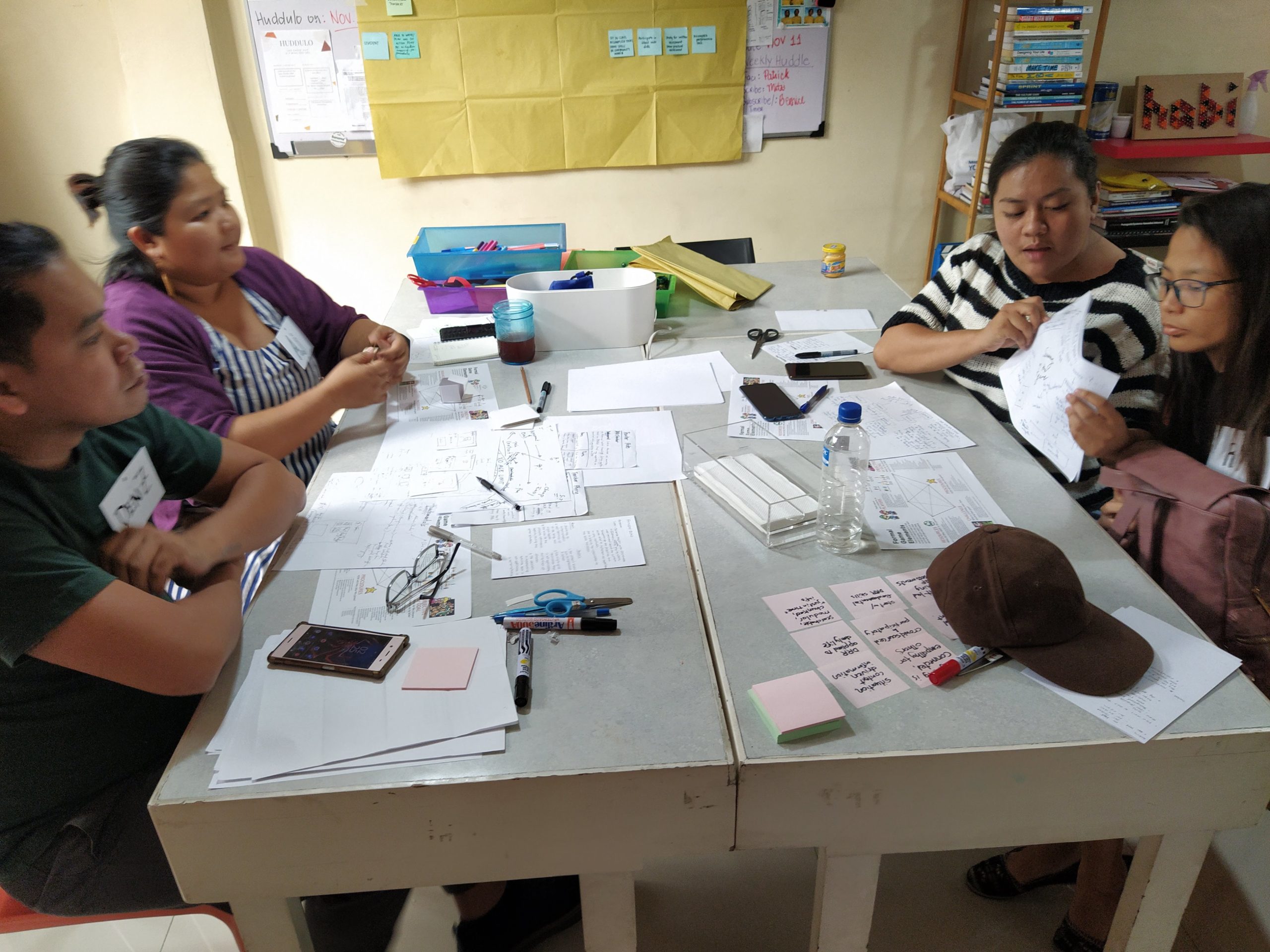
A quick presentation and feedback session for their prototypes. 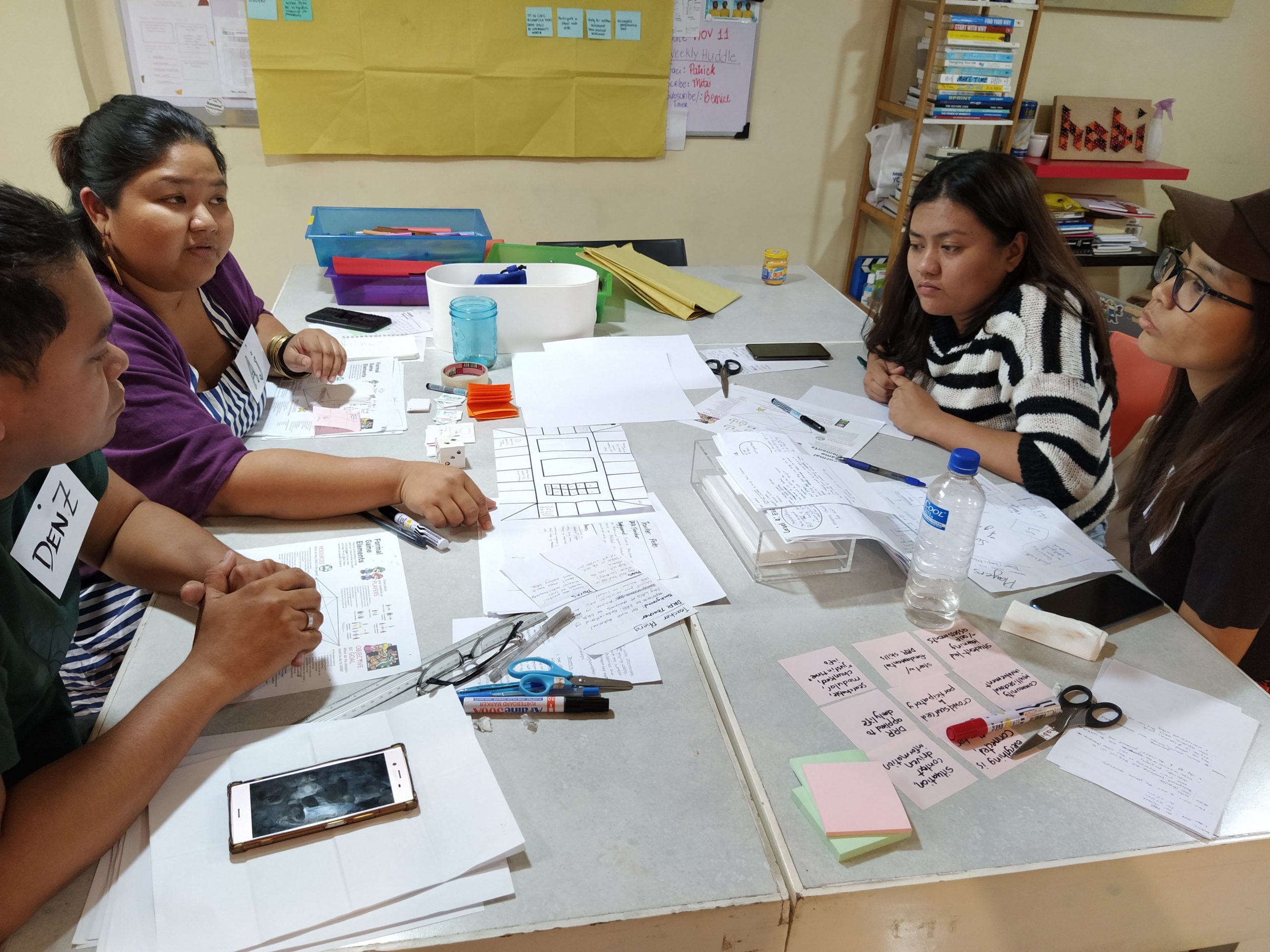
A quick presentation and feedback session for their prototypes. 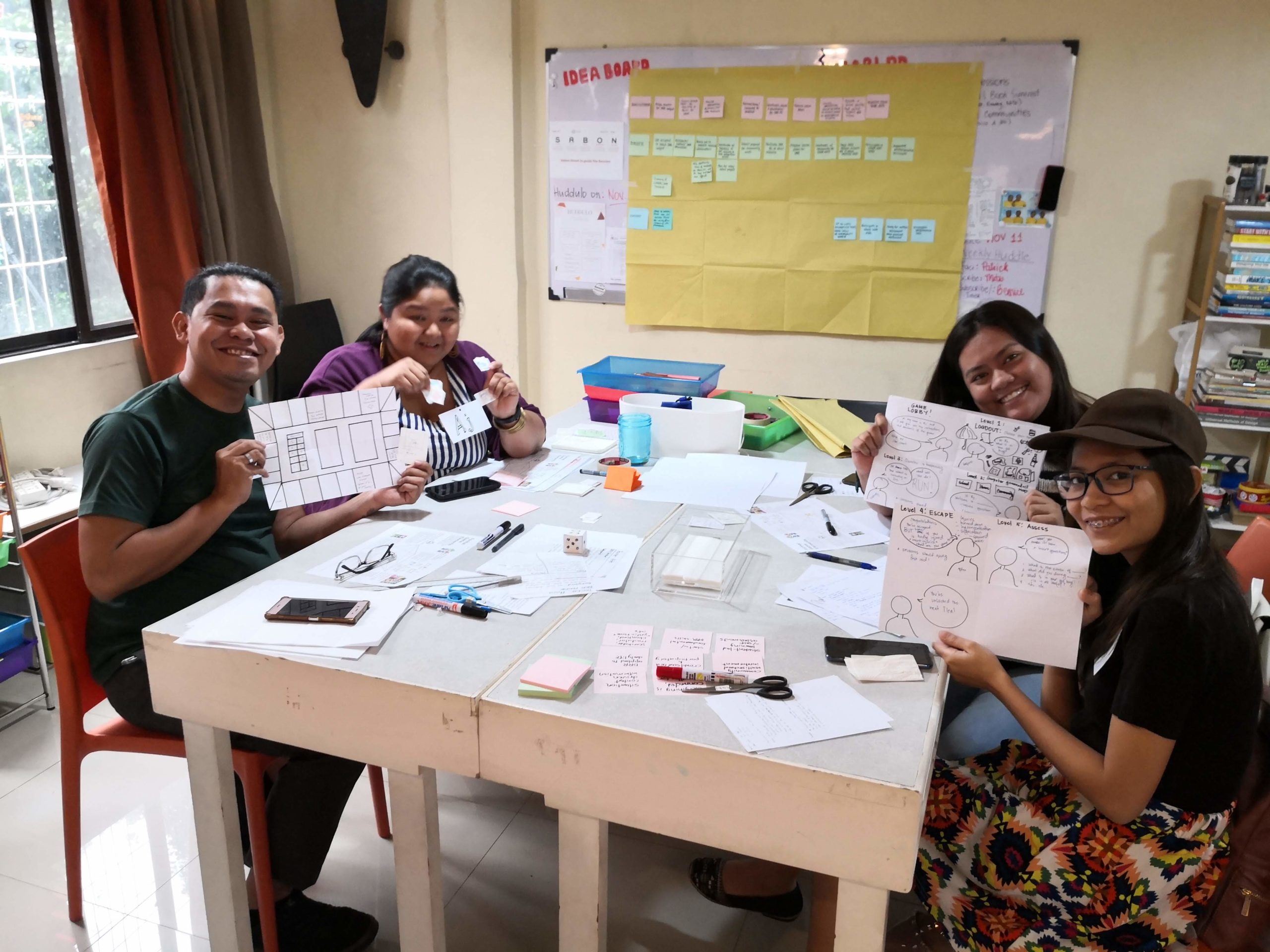
Two prototype classroom games for DRR made in the span of 3 hours.
Some freshman students from the UP College of Education who had experienced the DRR curriculum when they were still in senior highschool were also invited to join the co-design process. They were able to provided a much needed learner perspective of the curriculum.
The design team rapidly generated a series of game prototypes to test the playability of the game mechanics, the effectiveness of learning for the intended concepts or topics, and the usage and ergonomics of the game pieces and assets.
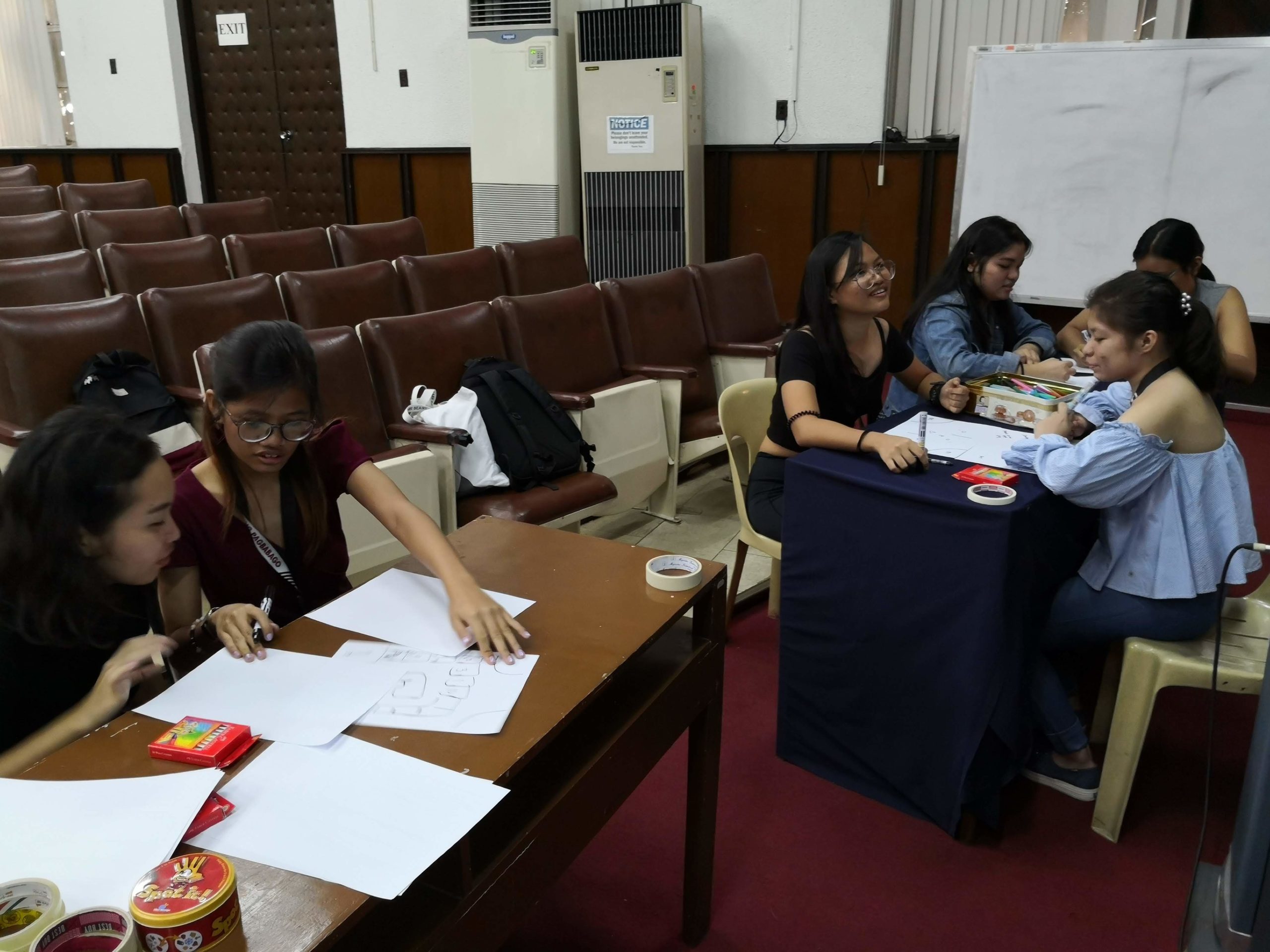
Rush prototyping games to introduce the participants to the process. 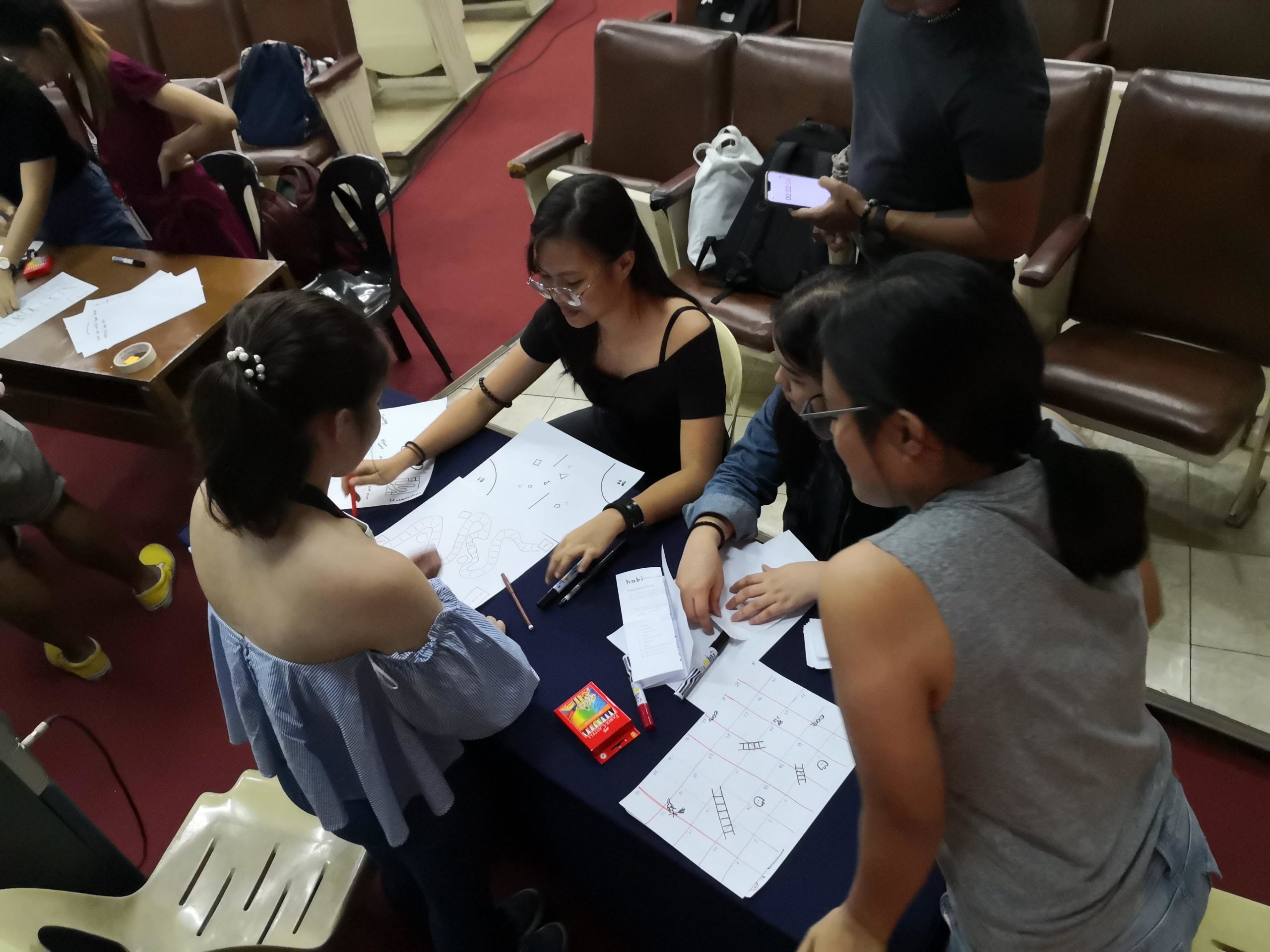
Rush prototyping games to introduce the participants to the process. 
Play-testing some prototype games created by the students. 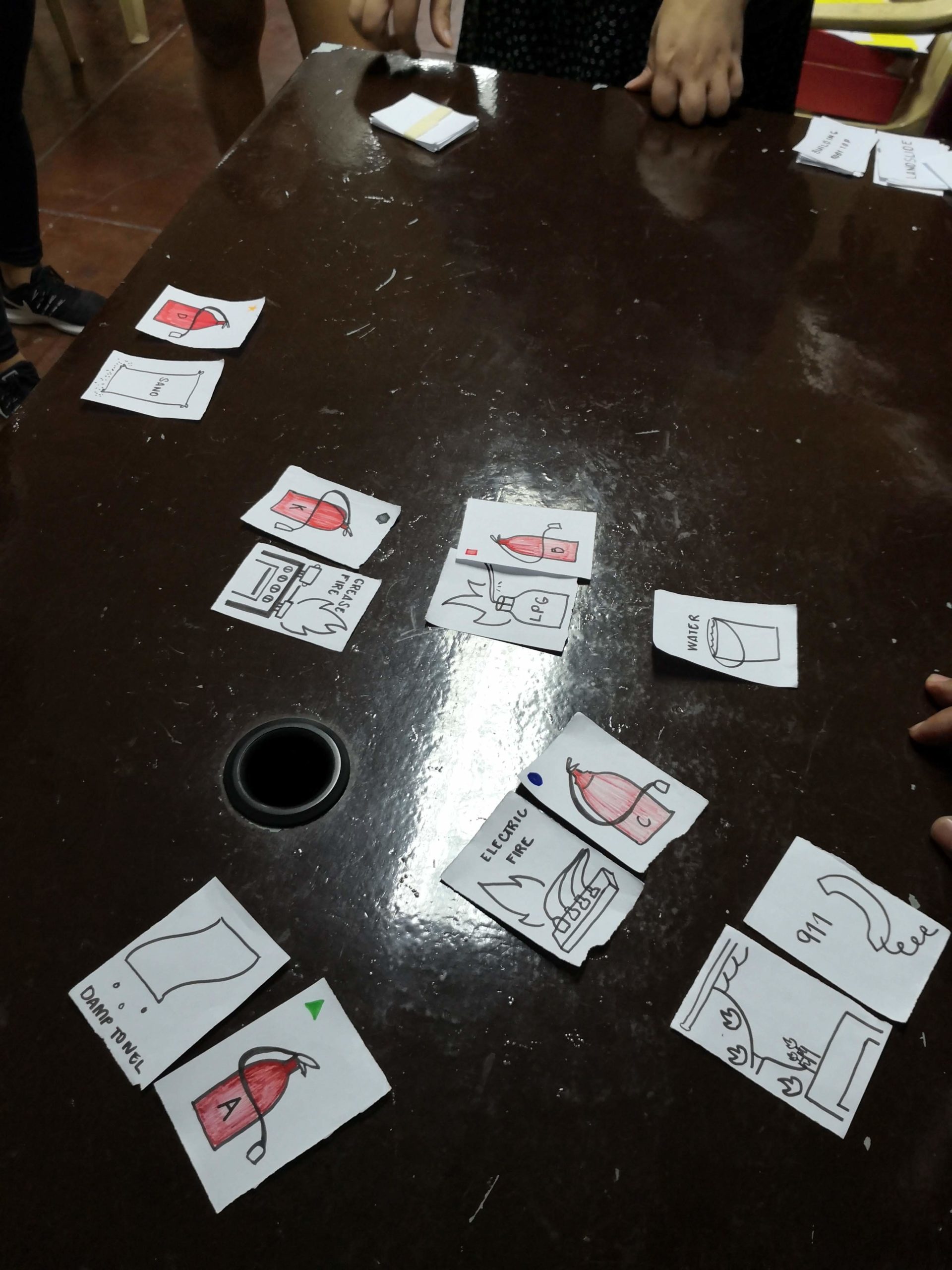
Play-testing some prototype games created by the students. 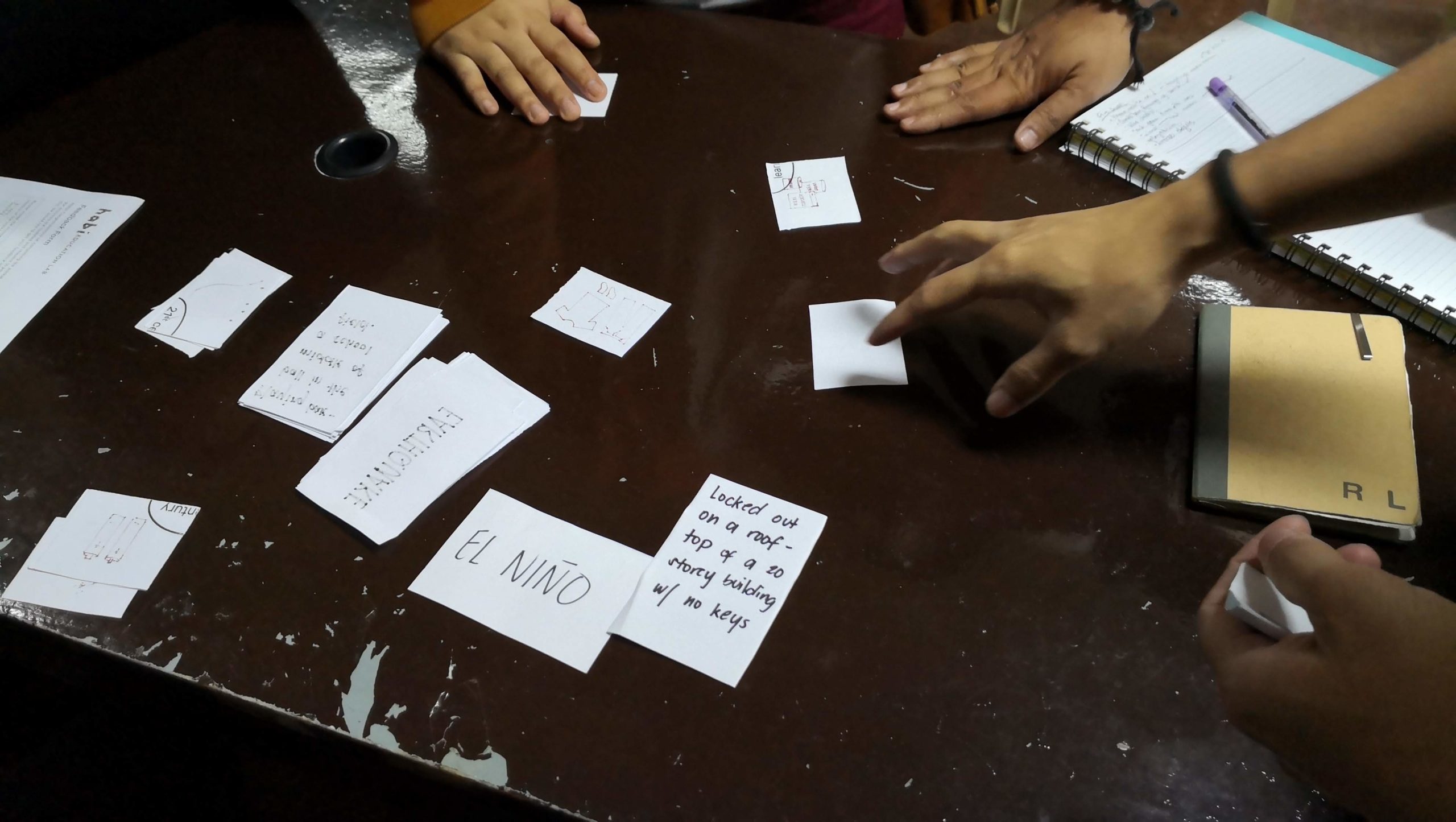
Play-testing more prototypes. 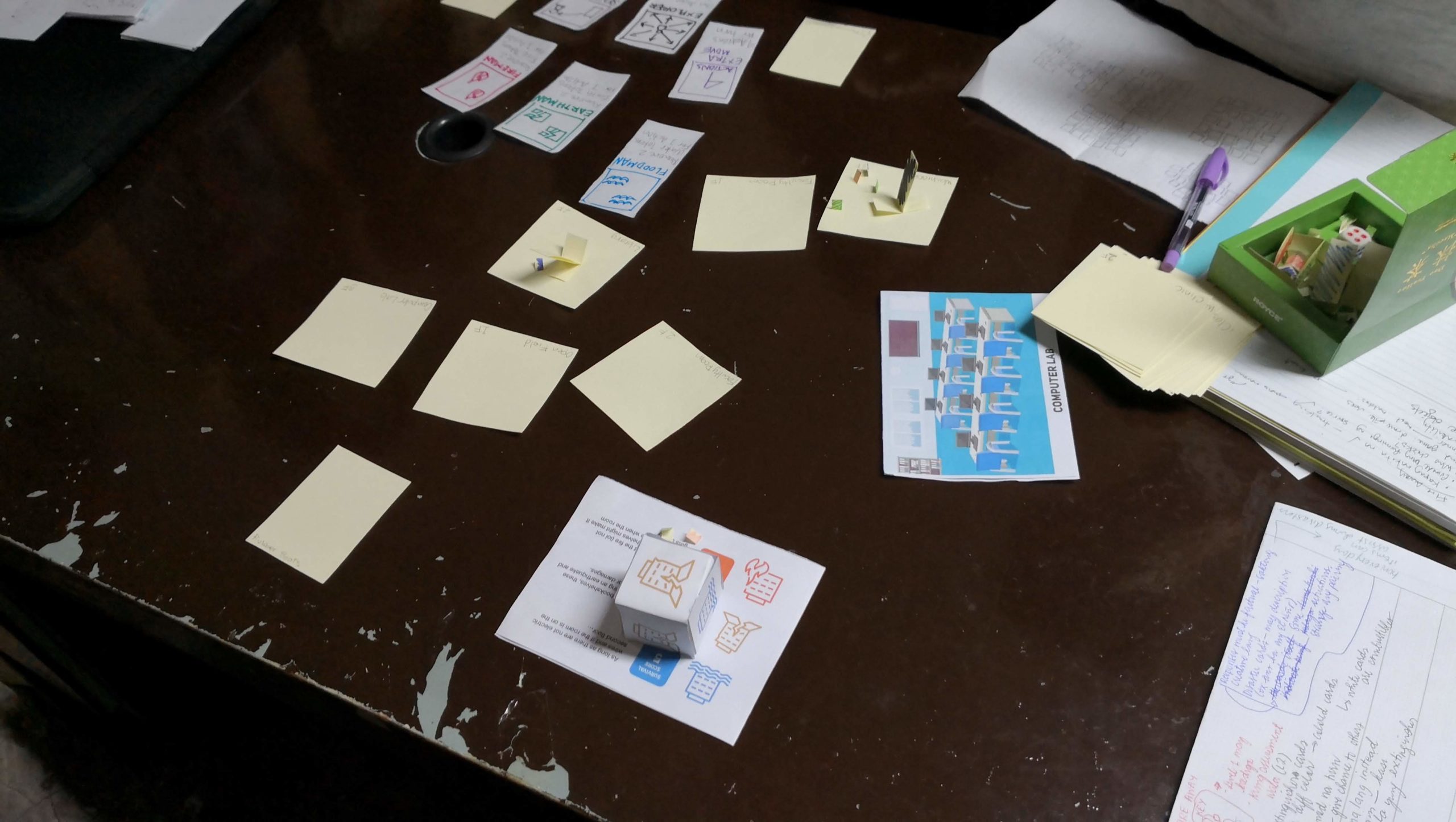
Play-testing more prototypes. 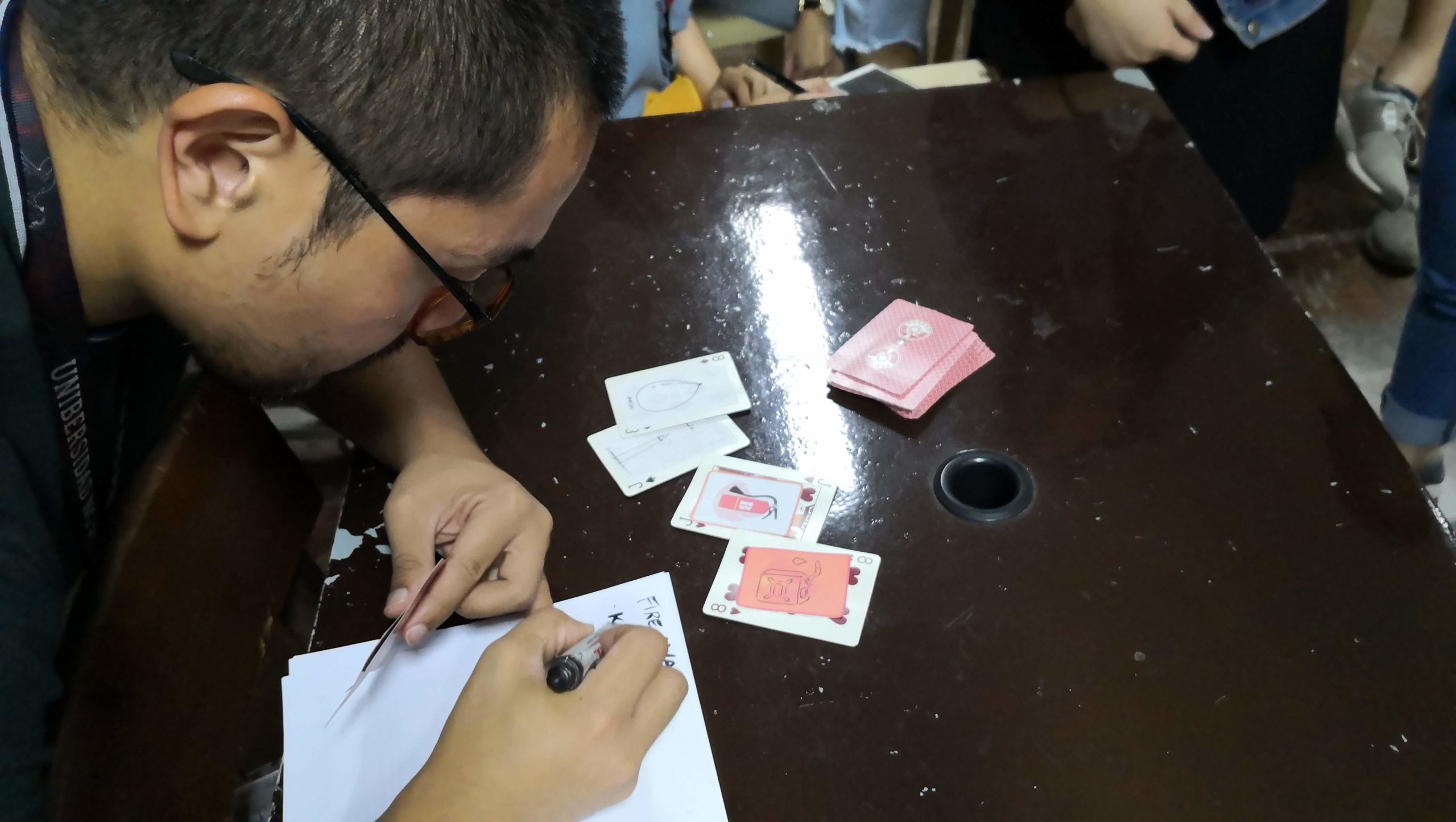
Giving feedback to improve the prototypes. 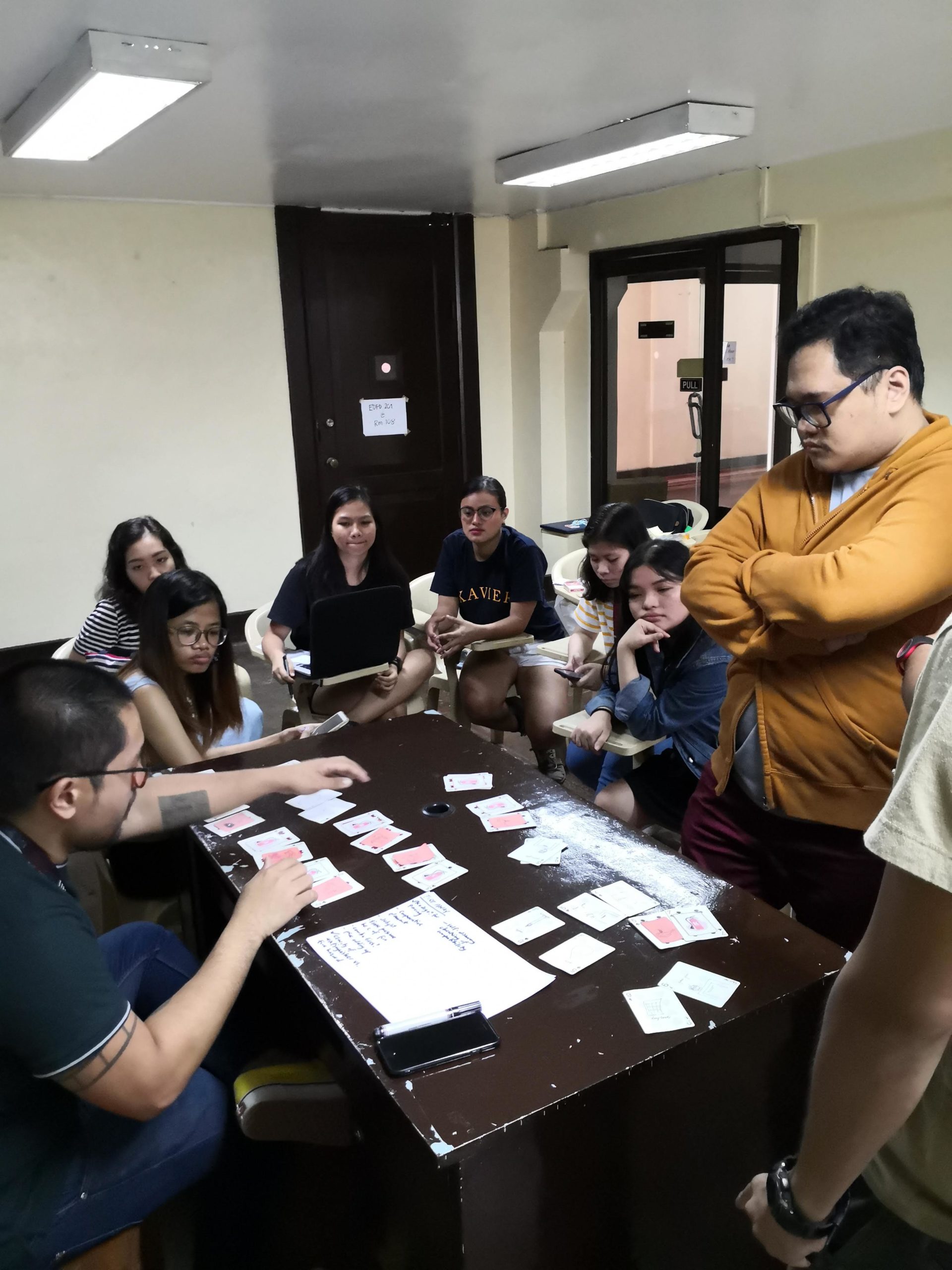
Feedback is an important process in design development.
Play testing and Development
An internal playtest was conducted with a teacher and a game designer, to gain a better understanding of playability and deployability and to also refine the game mechanics.
Ryan Bestre, a 2016 HANDs Fellow, climate advocate and educator, provided insights on how the games could be improved from the classroom perspective, like how teachers could possibly employ the games in class and how students of different age groups would possibly interface with the games and the DRR concepts behind them. Nico Valdez, game designer and president of Balangay Games, provided more technical insights and feedback from the game design and game development perspective.
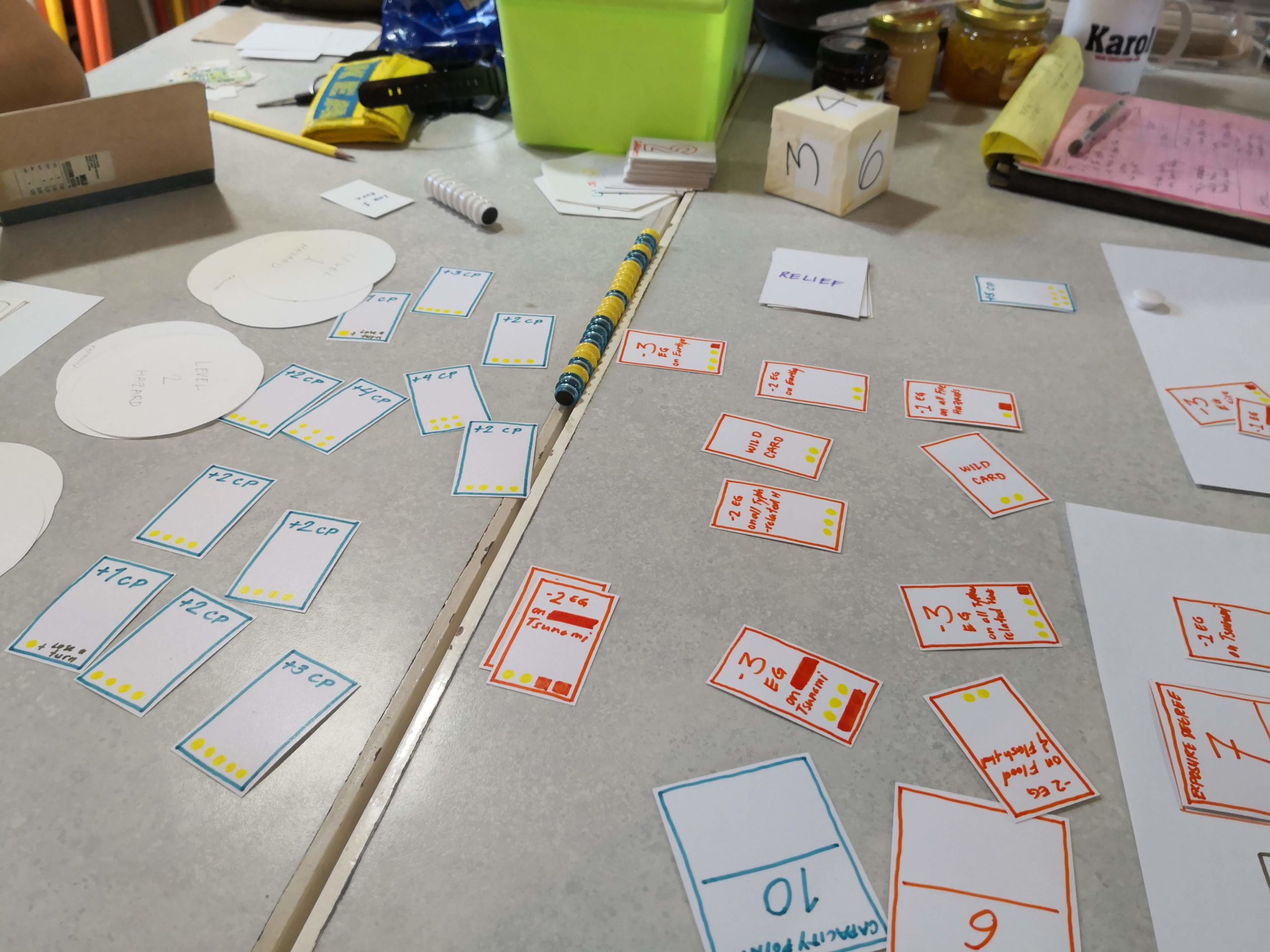
Play-testing and feedbacking on the game prototypes. 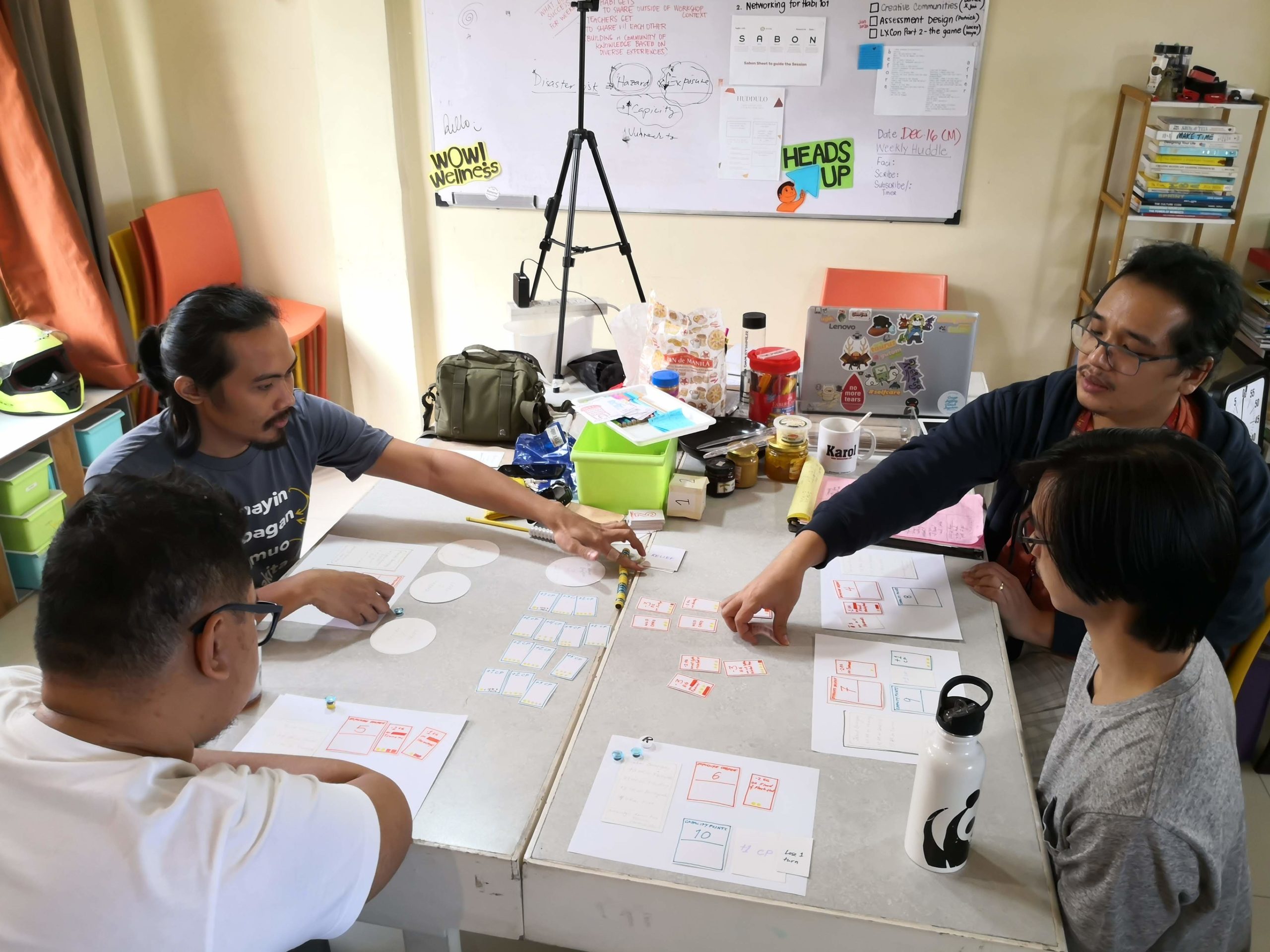
More technical feedback was given on how the games could be improved. 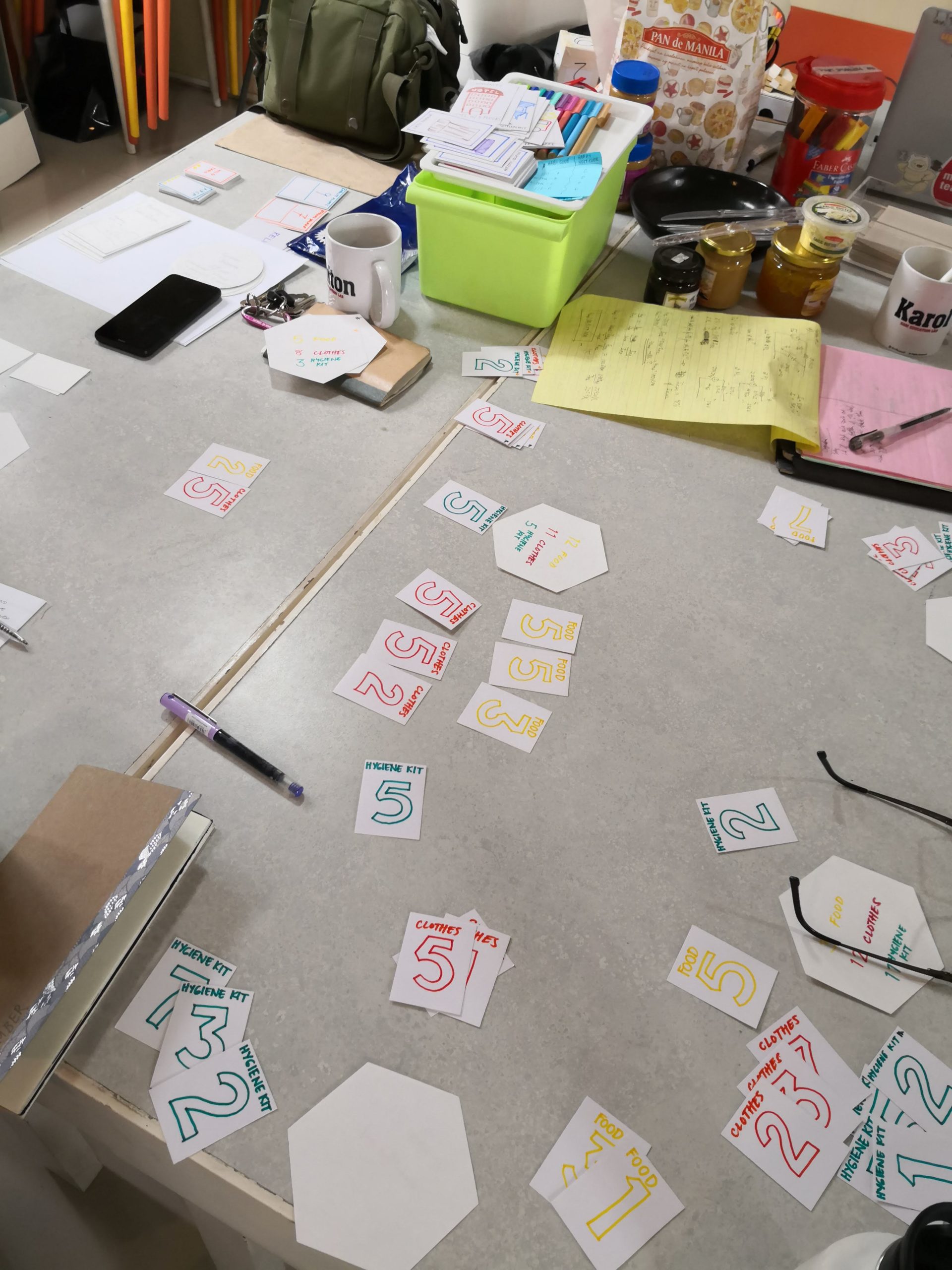
The print-and-play format of the tool kit was determined as the most viable method for distributing the toolkit.
The prototypes were then brought to 3 different senior high schools (Far Eastern University Senior High School, Miriam College High School and Claret School of Quezon City) for play-testing and gathering feedback. Being able to play-test the games with actual learners was productive and provided rich insight to the design of the games, mainly on how it could be brought into the classroom by the teachers and how it could be improved in terms of engagement.

Playtesting and gathering insights from FEU SHS students. 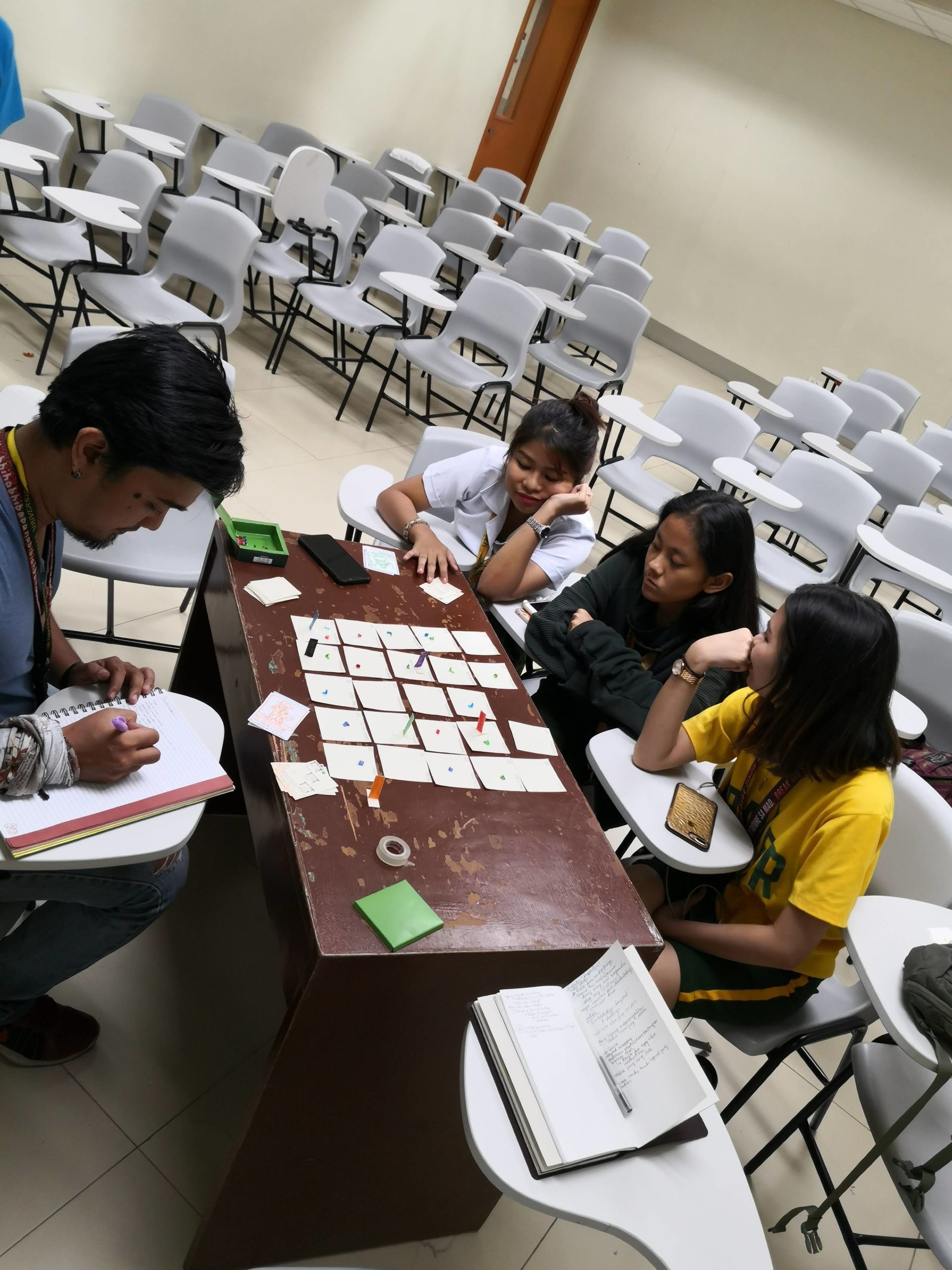
Playtesting and gathering insights from FEU SHS students. 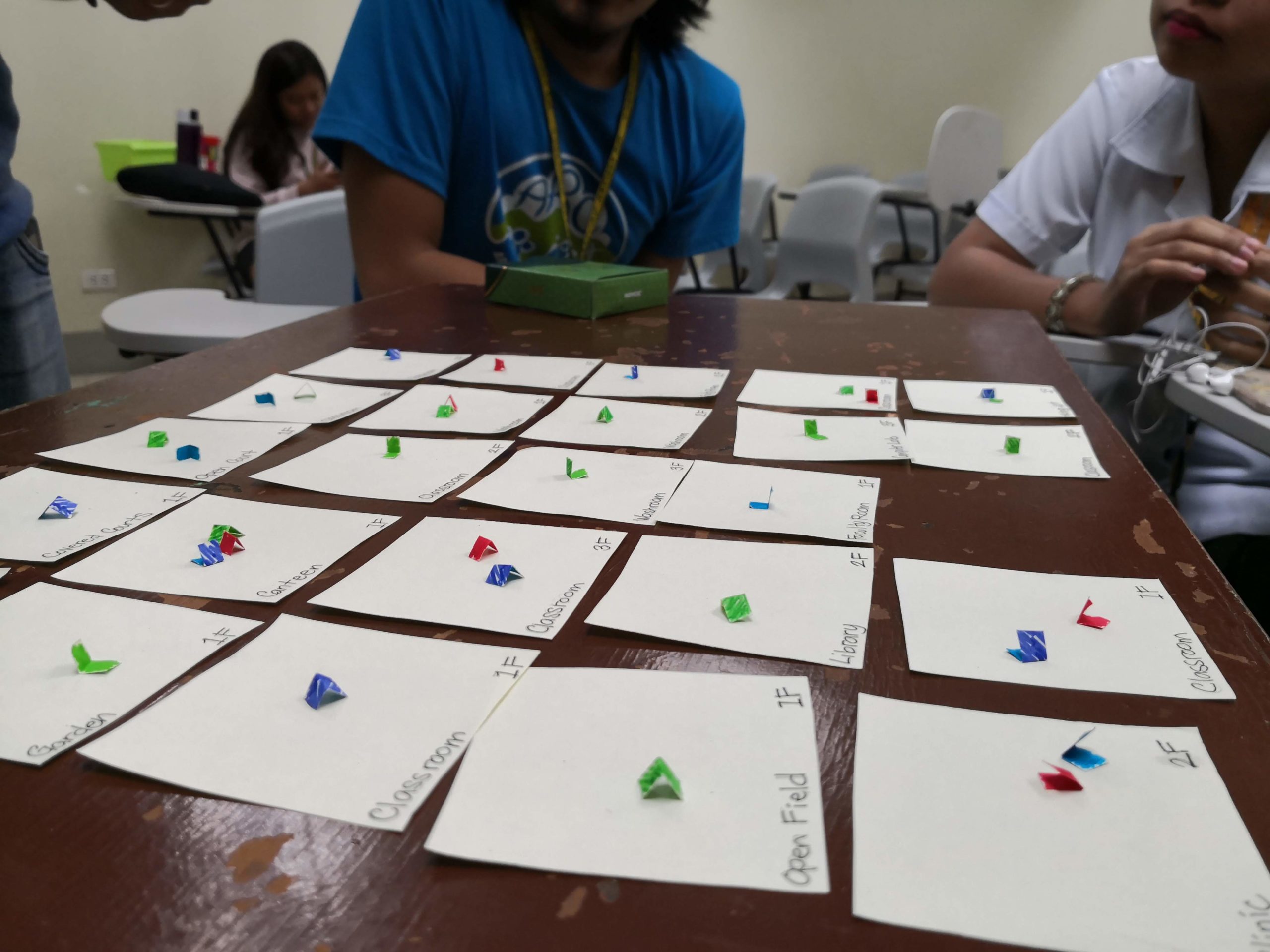
Playtesting and gathering insights from FEU SHS students. 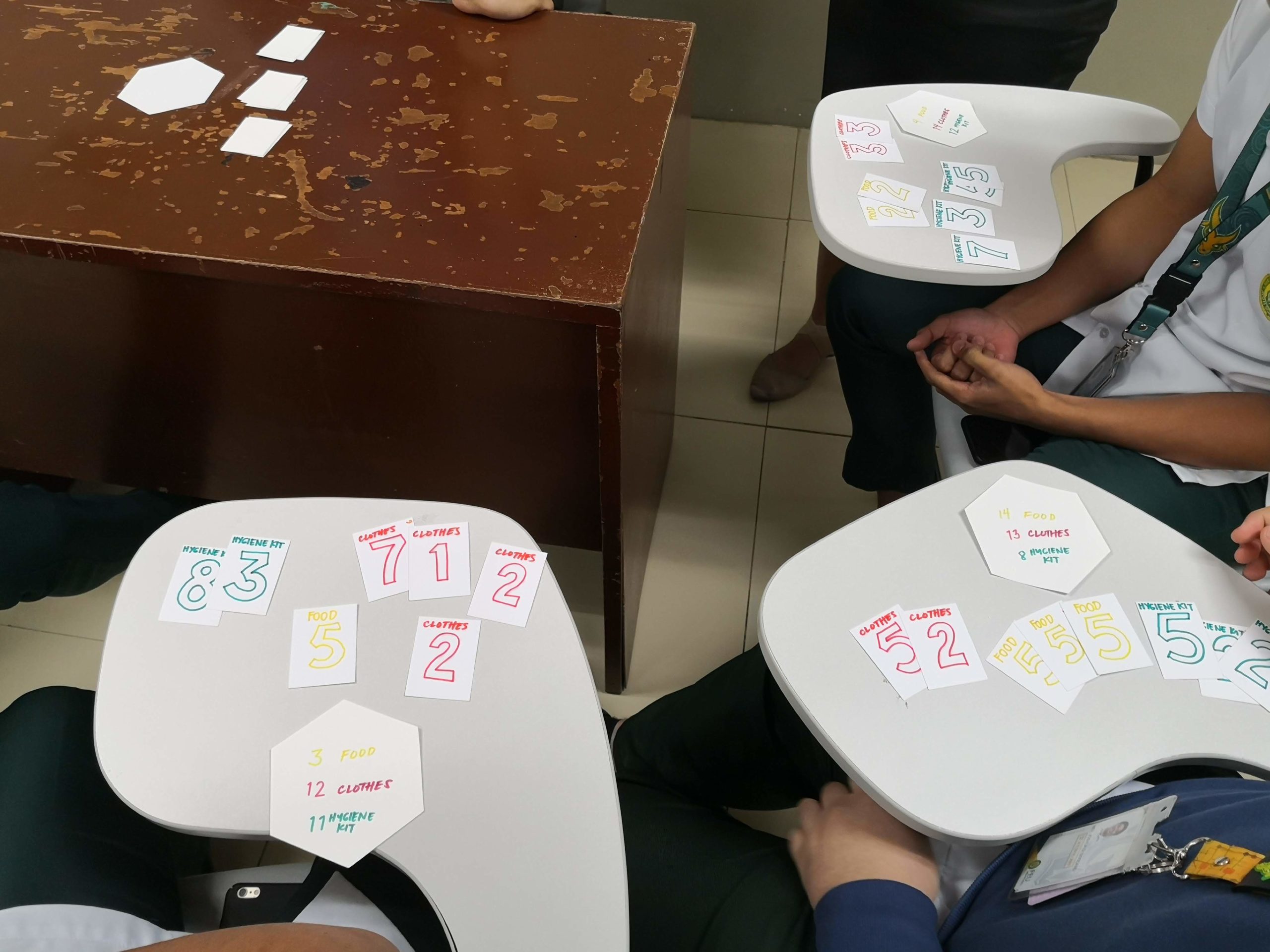
Playtesting and gathering insights from FEU SHS students. 
Playtesting and gathering insights from FEU SHS students. 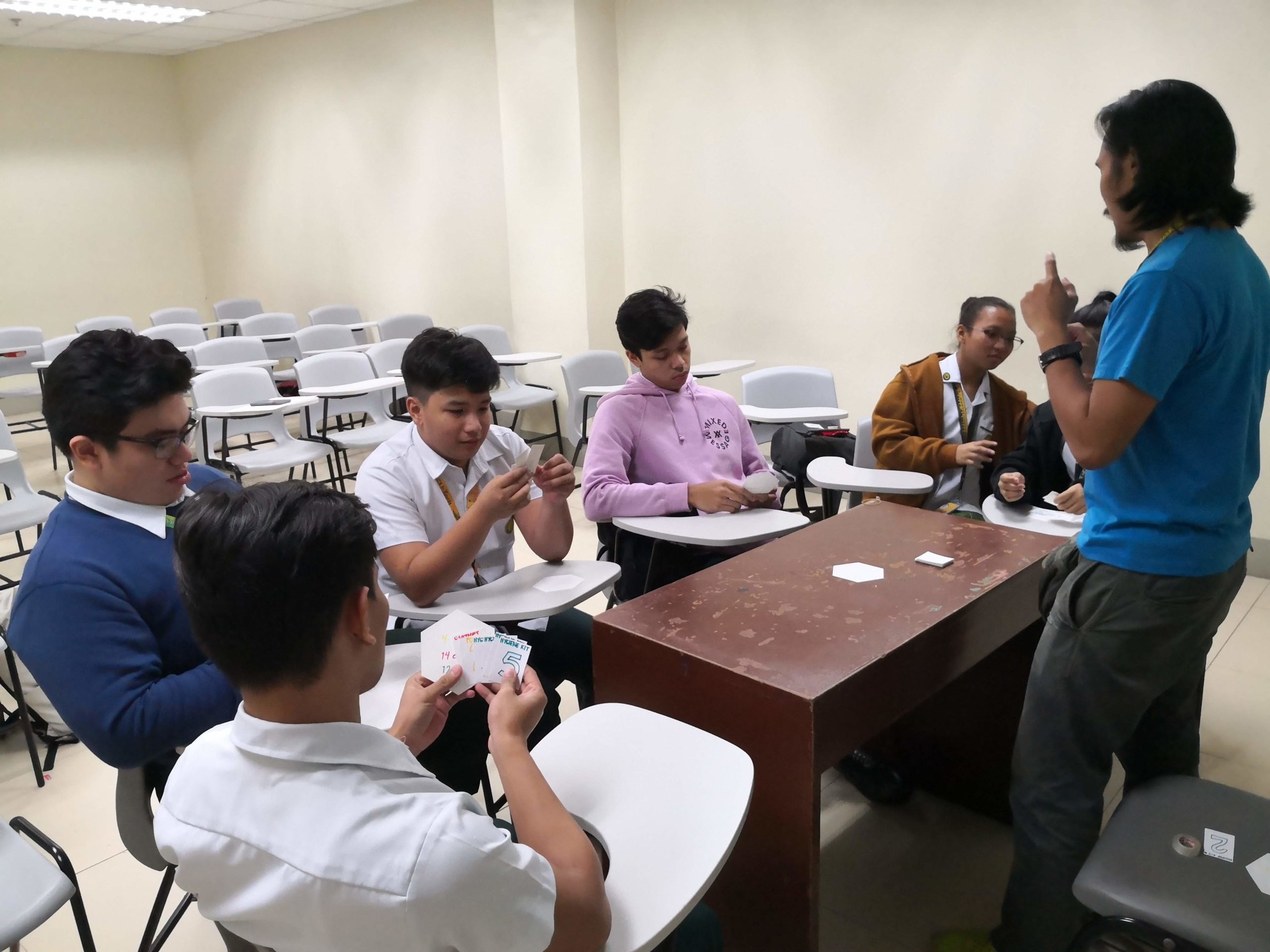
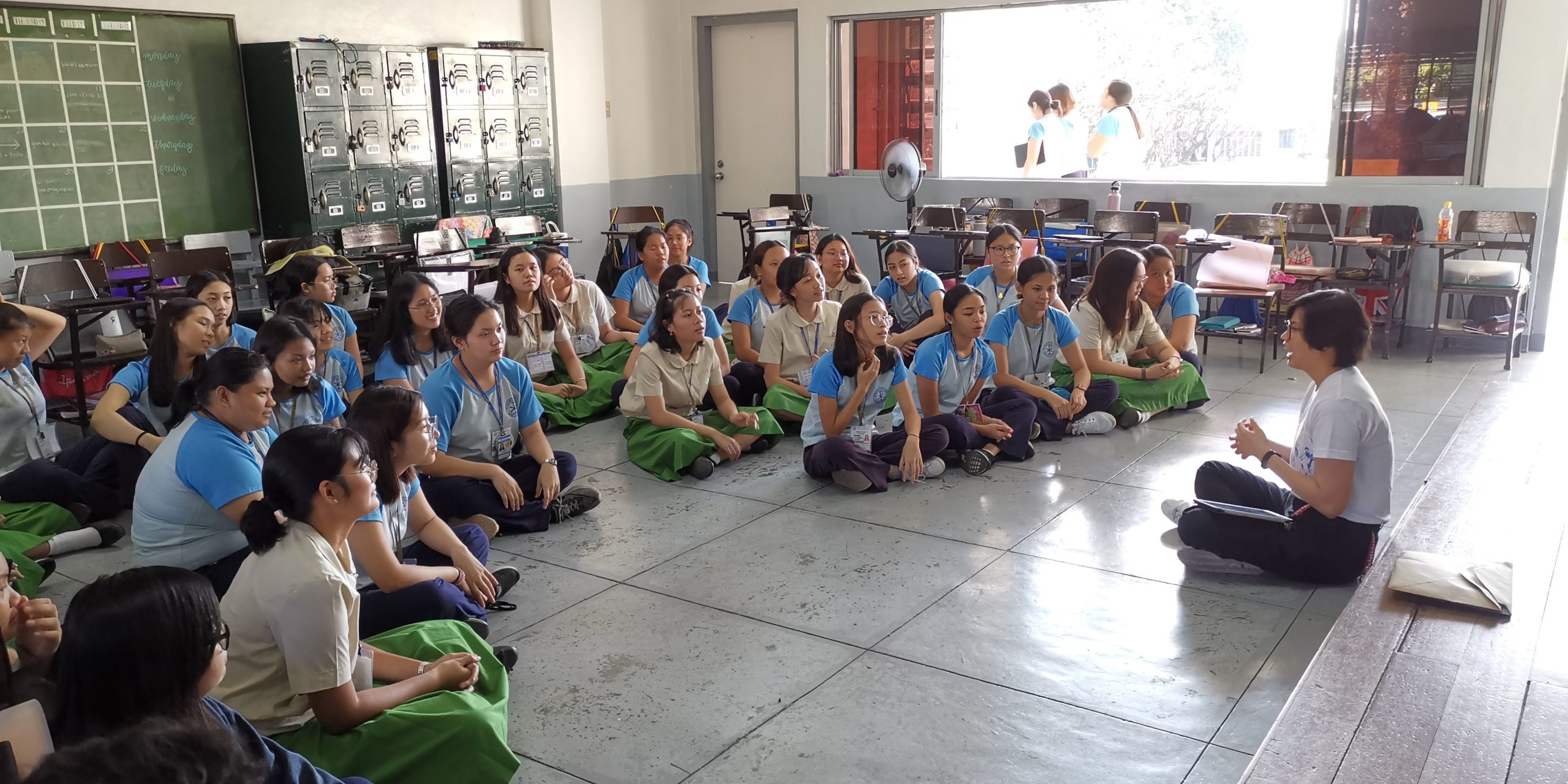
Orienting the class before the play-test. 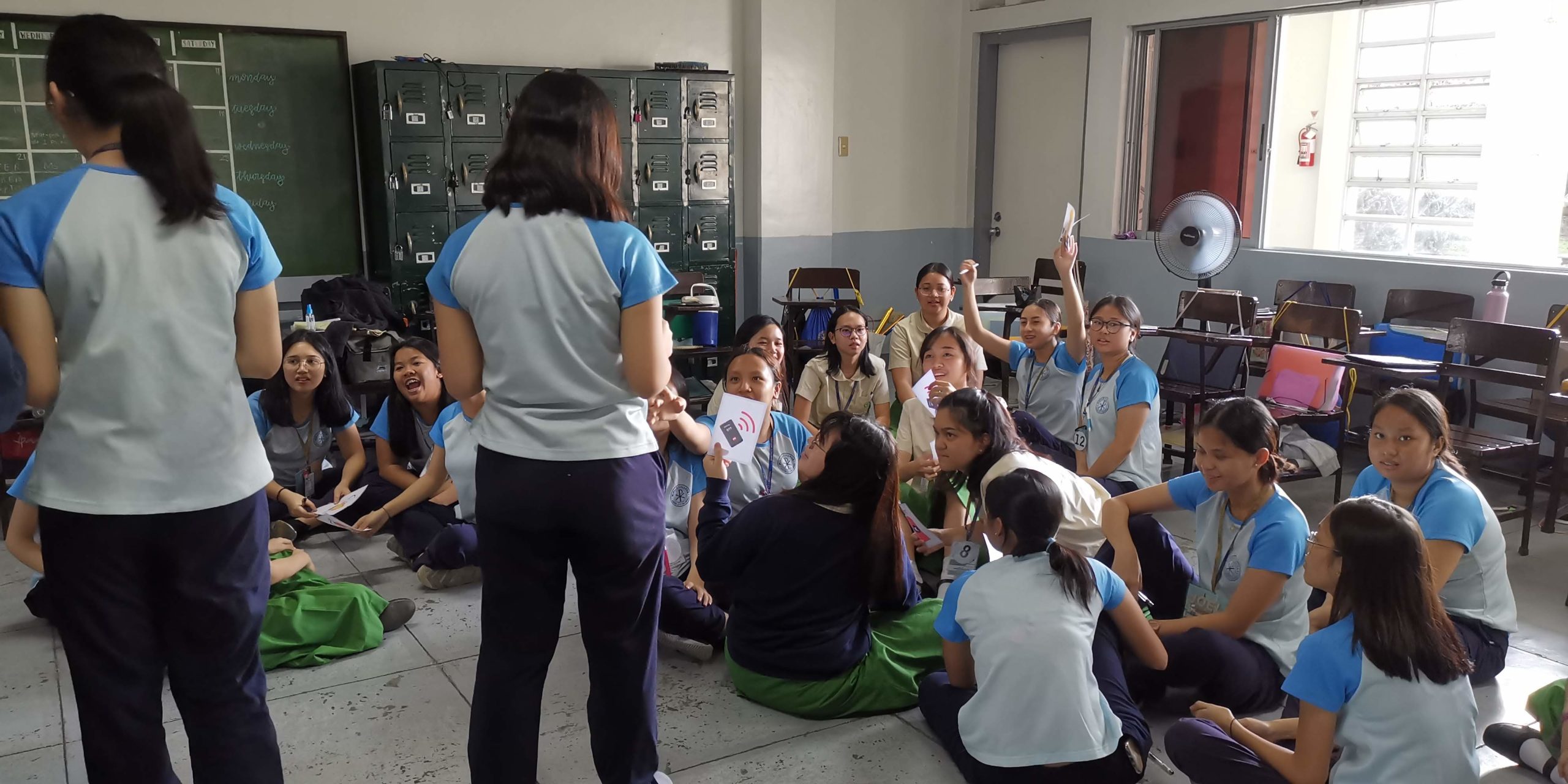
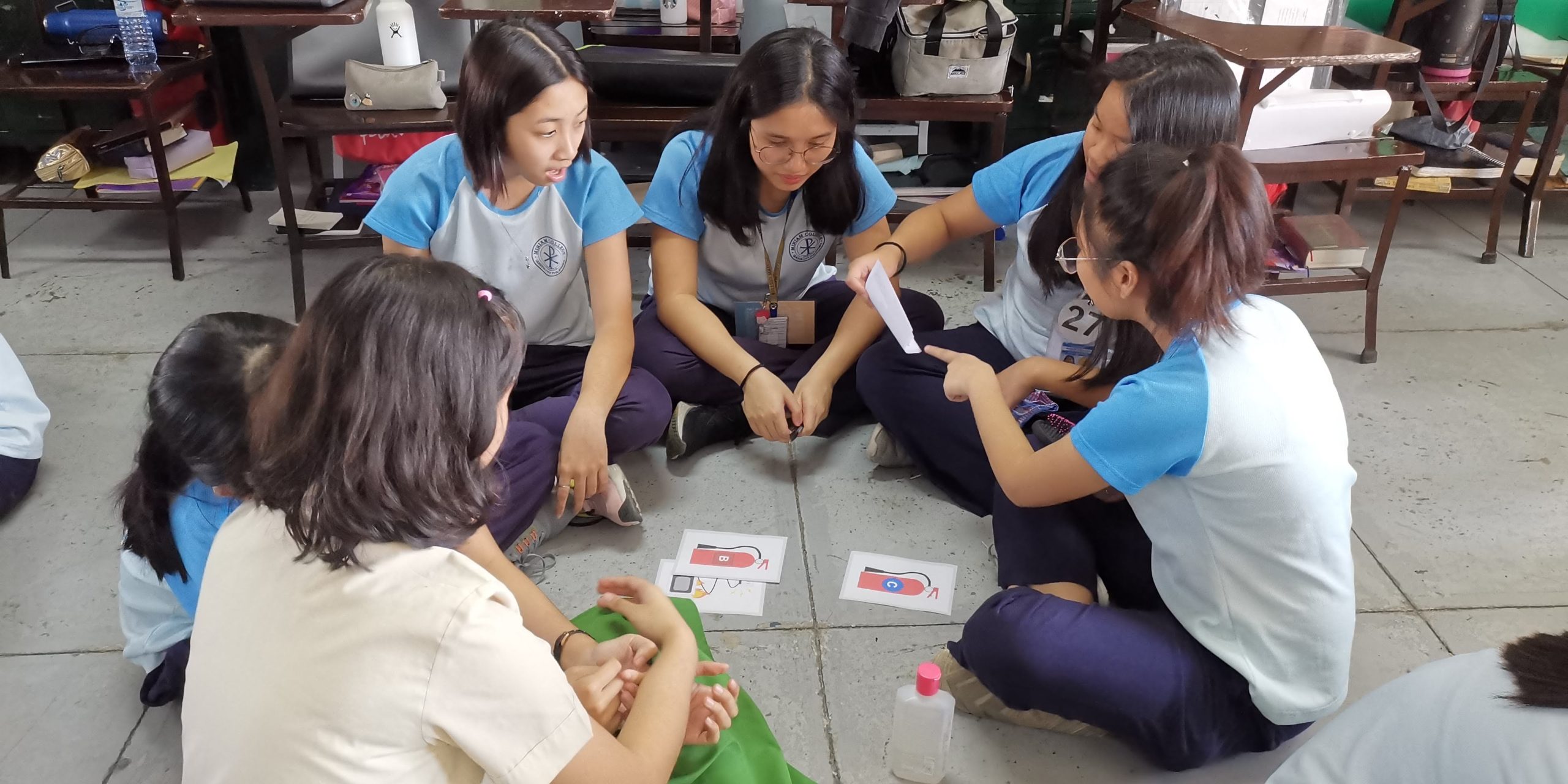
Learners were playing with higher fidelity prototypes. 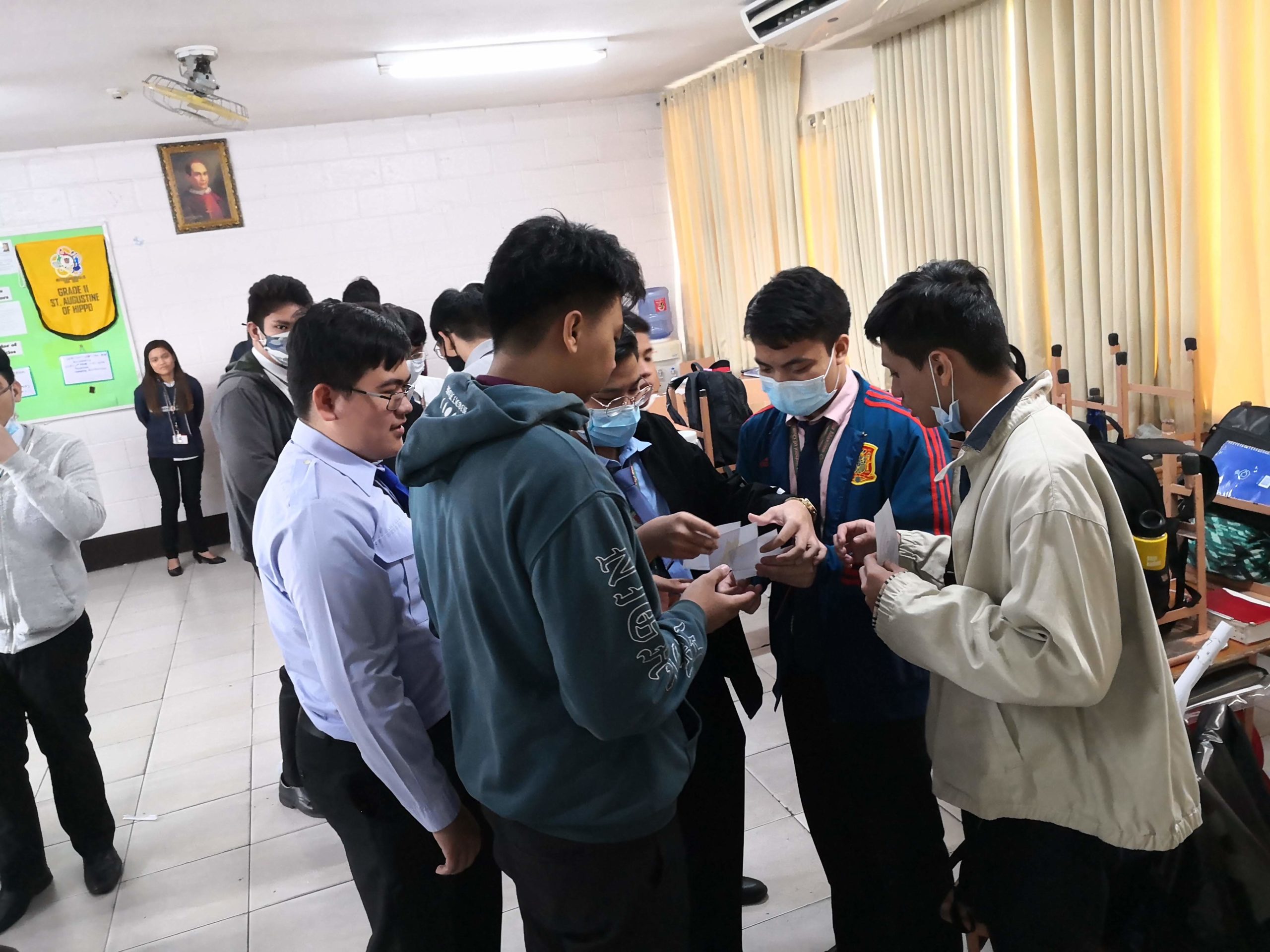
Play-testing in a classroom setting was essential in gathering insights on scale and classroom management. 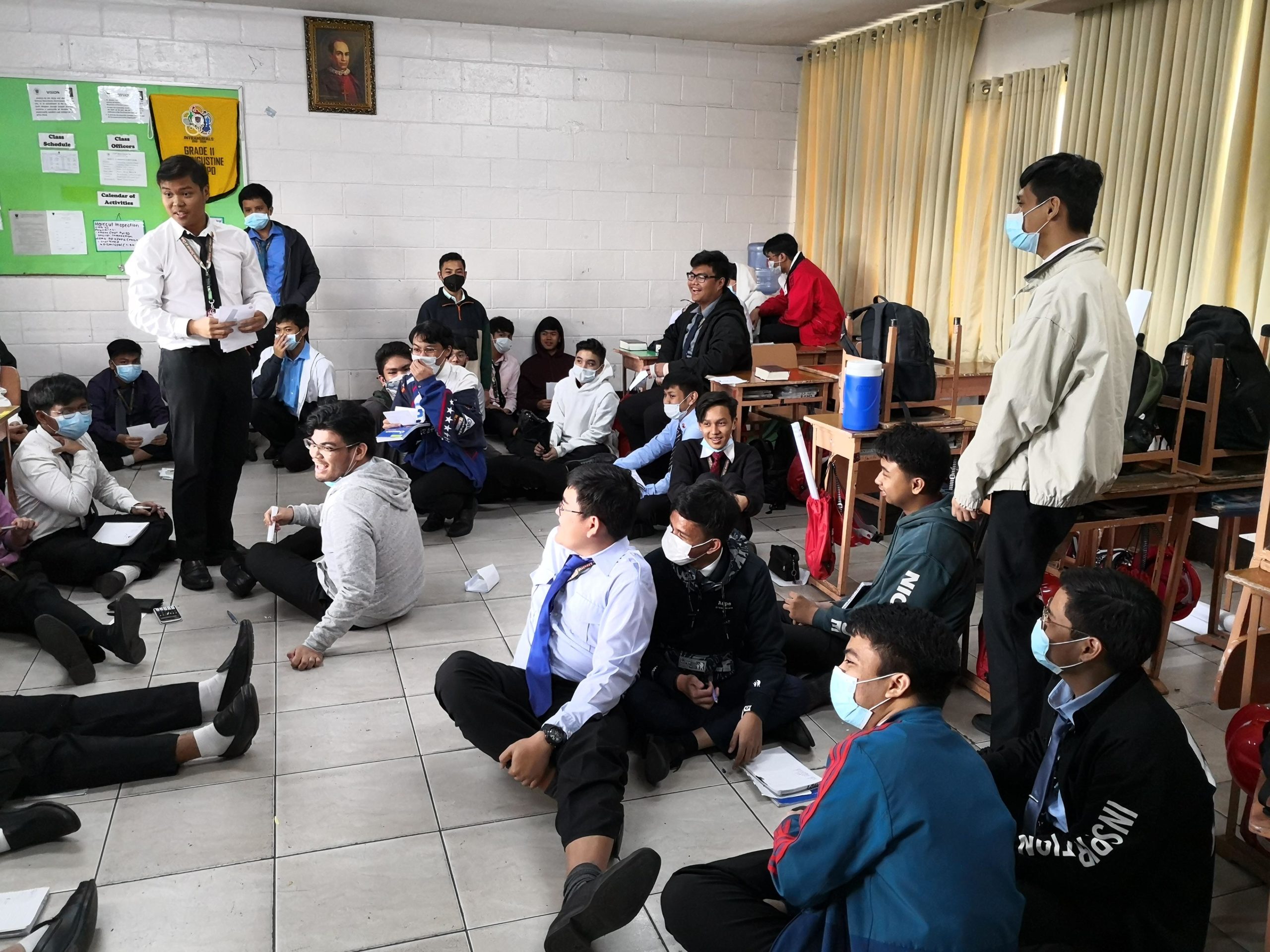
Production, Publishing and Promotion
After a final round of refinement and internal evaluation, it was decided that 5 games would form the toolkit. Each of the 5 games would be mapped out on the DRR curriculum, and would be published online with a downloadable game manual, print-and-play game assets, and tips on how to process and use the games in class.
Our Handang Heroes
Our deepest thanks for making these games possible!
- Japan Foundation
- Mary Alexis Johanna Villar (Department of Education)
- Mc Daryl Pedro (Southville International Schools and Colleges)
- Carmela Valenzuela Magpile (FEU Senior High School)
- Ryza Anne Margareth Roa Gamba (FEU Senior High School)
- Paolo Carmelo Alforte Victoria (FEU Senior High School)
- Karizz Anne Morante (Philippine Science High School – Central Luzon Campus)
- Edgar Bonifacio (Potrero Elementary School)
- Denisse Carigma (UP College of Education)
- Danielle Capili (UP College of Education)
- Jelean Ibarra (UP College of Education)
- Beatrix Carmela Estrella (UP College of Education)
- Mica Aledro (UP College of Education)
- Jeraly Ruth Juganas (UP College of Education)
- Joyce Dizon (UNICEF)
- Ryan Bestre (HANDs! Project 2016)
- Nicanor Valdez (Balangay Games)
- Dr. Victoria Urbiztondo (Claret School of Quezon City)
- Alfred Sanchez (Miriam College High School)
- Nancy Roman (Miriam College High School)
- Grade 11 – Abbott (Miriam College High School)
- Dr. Alfonso Victor Luna (Veterans Memorial Medical Center)

